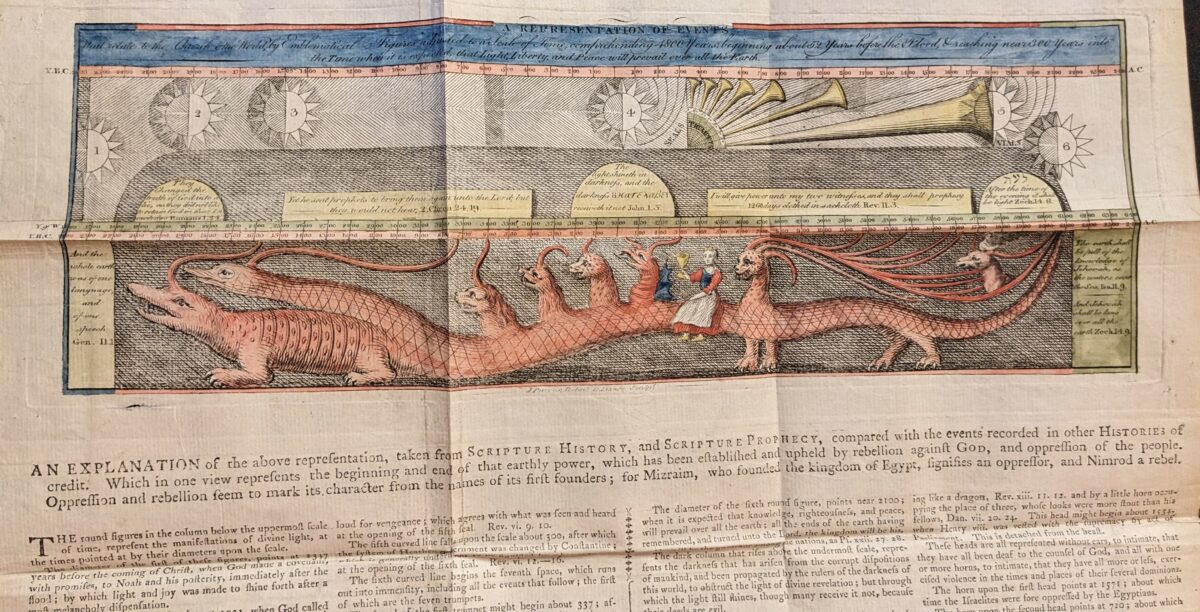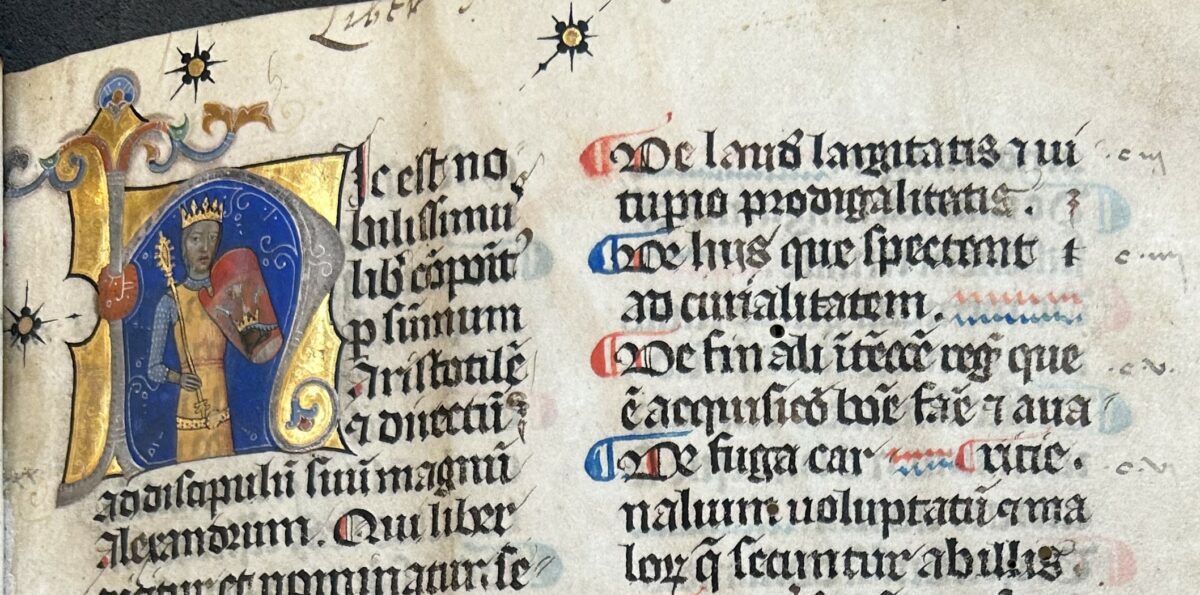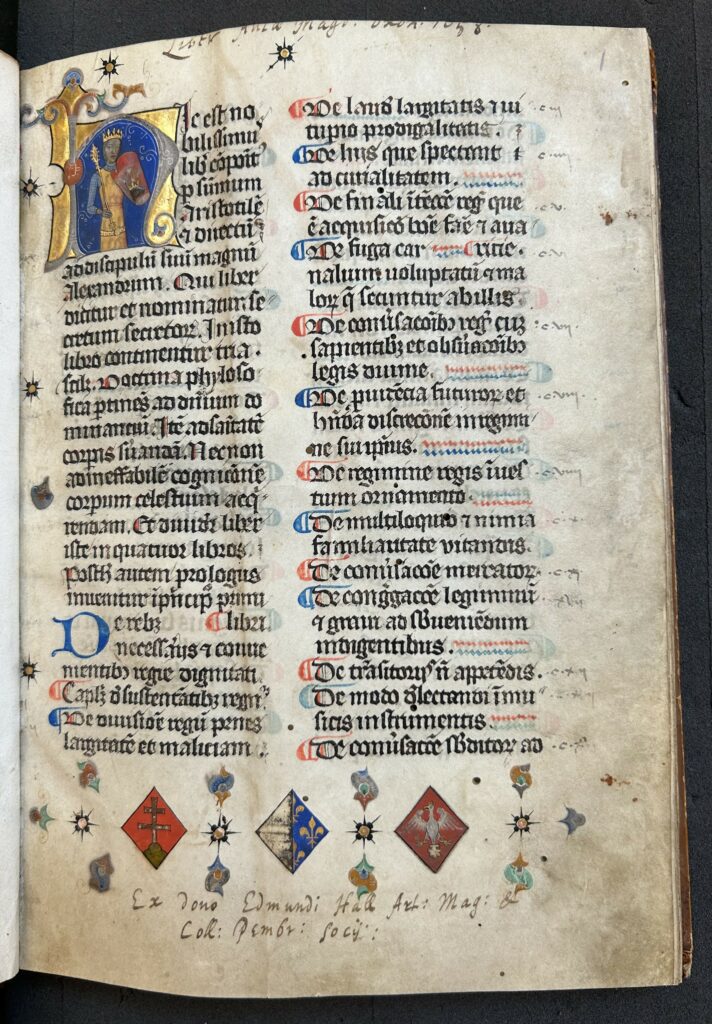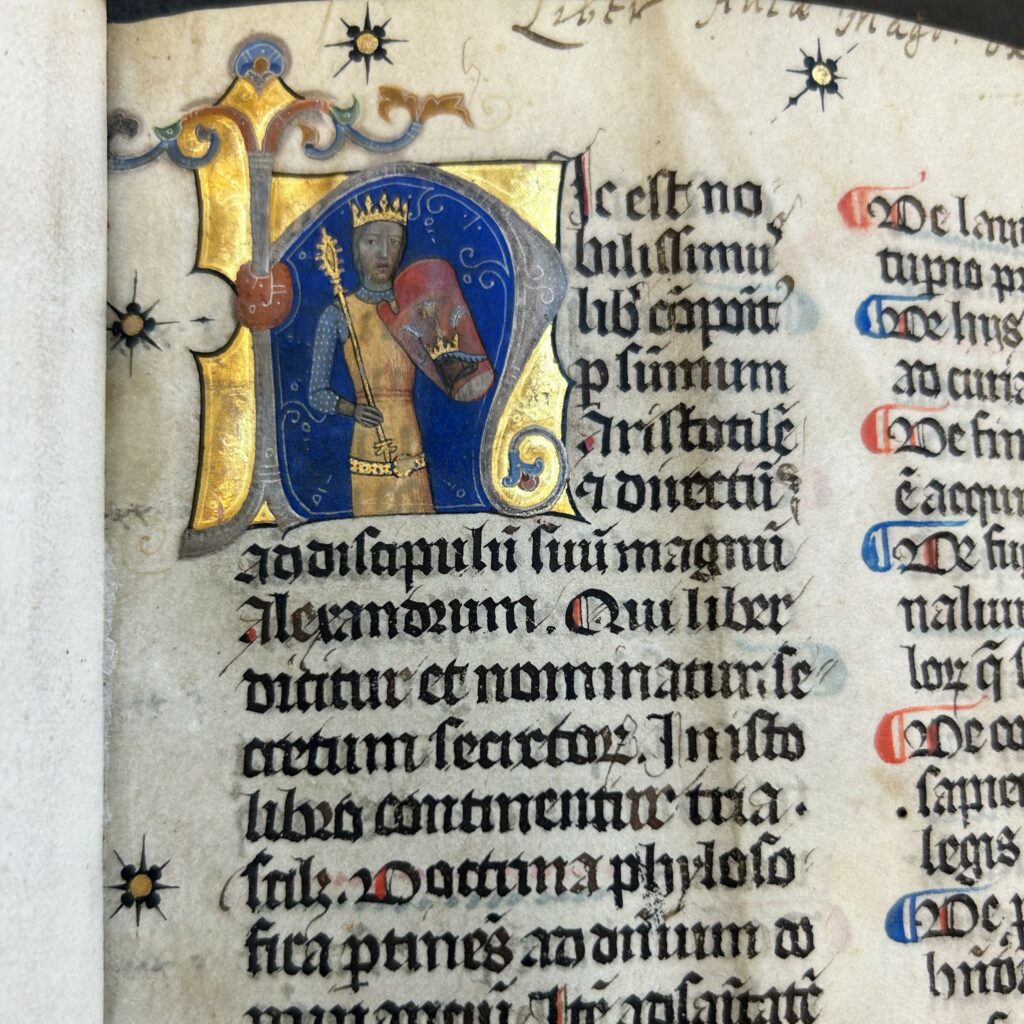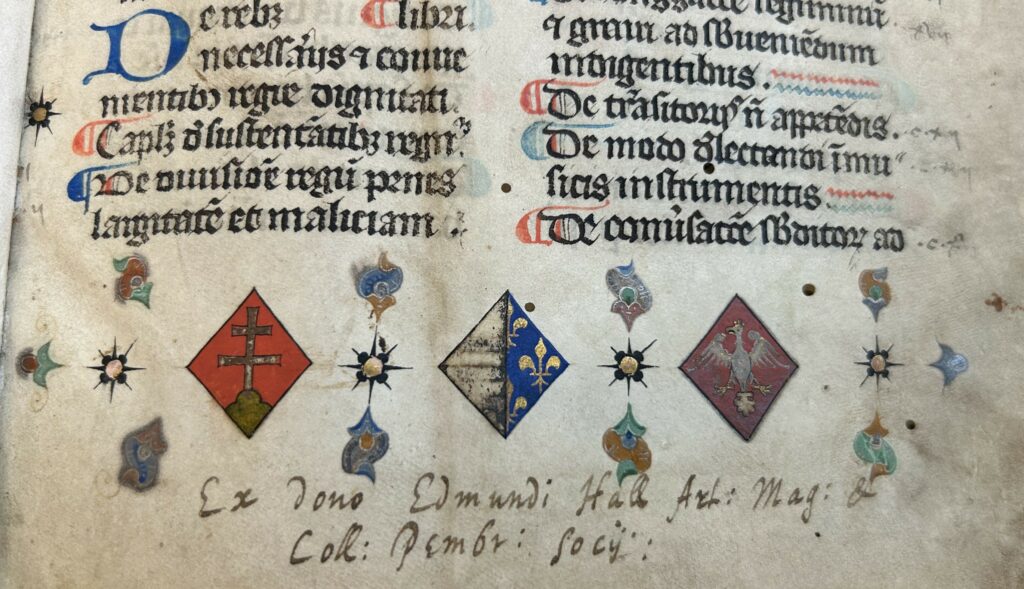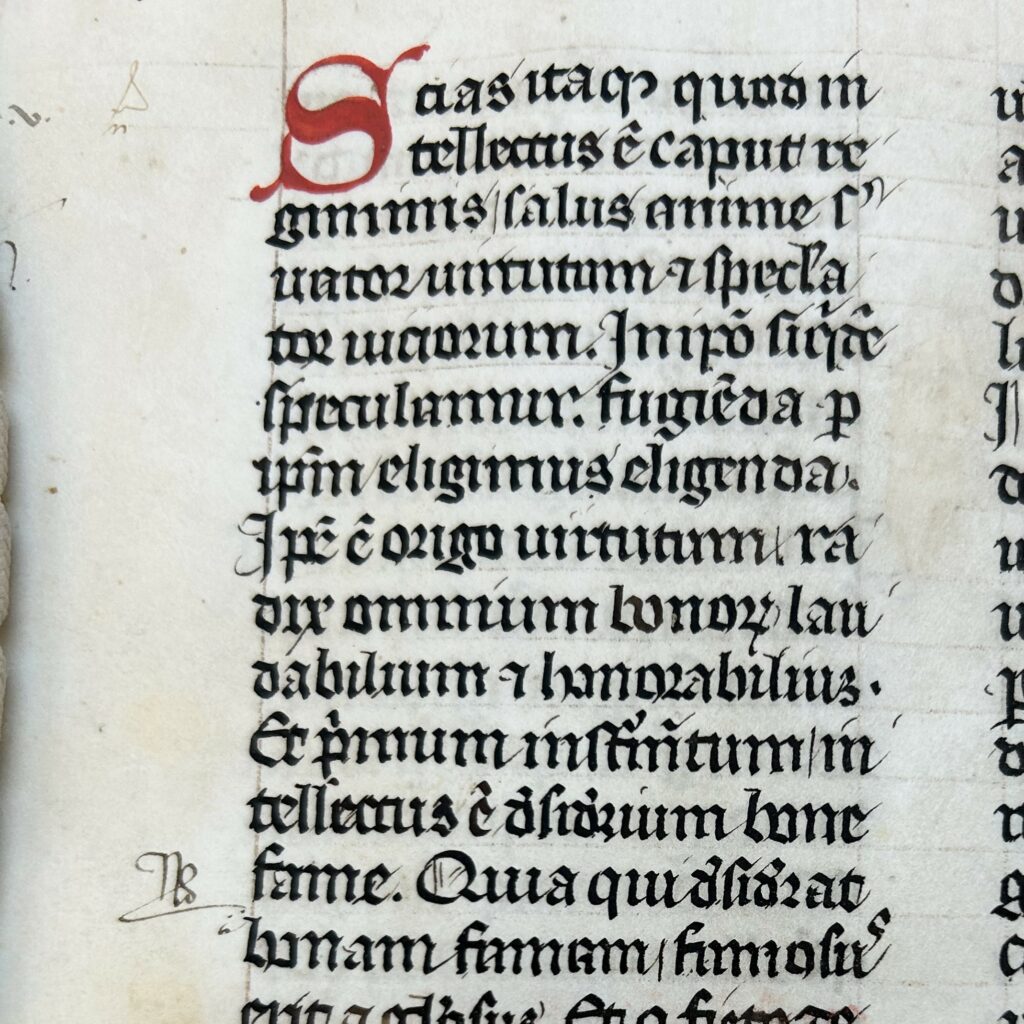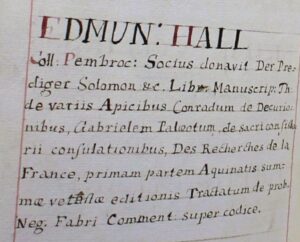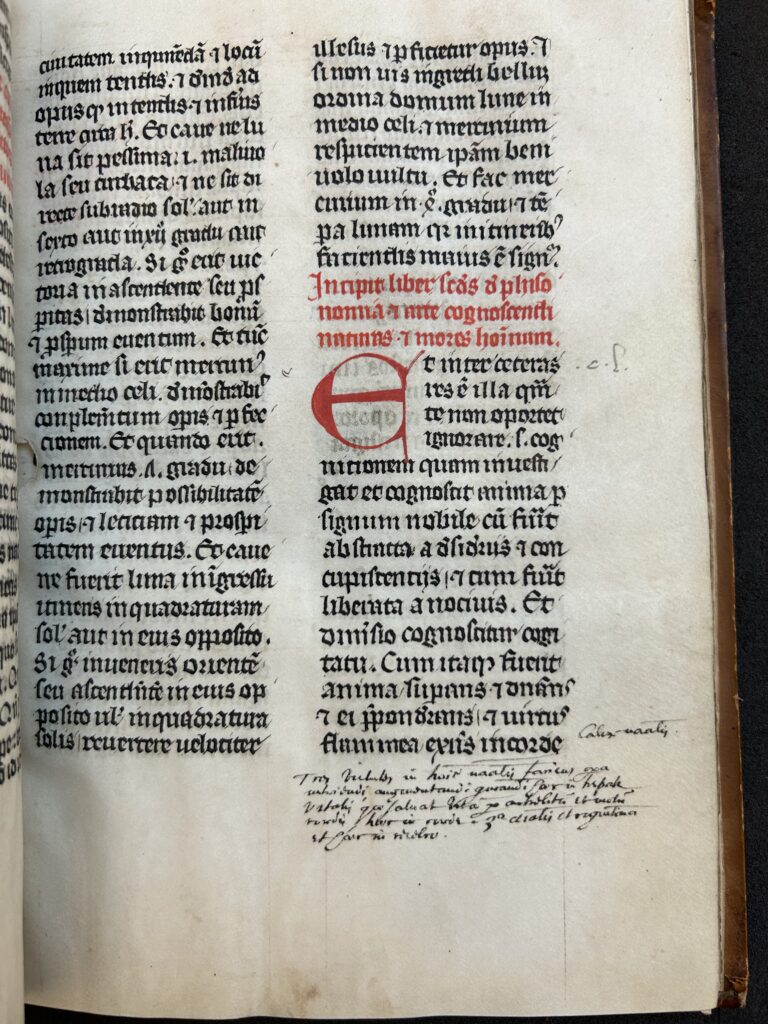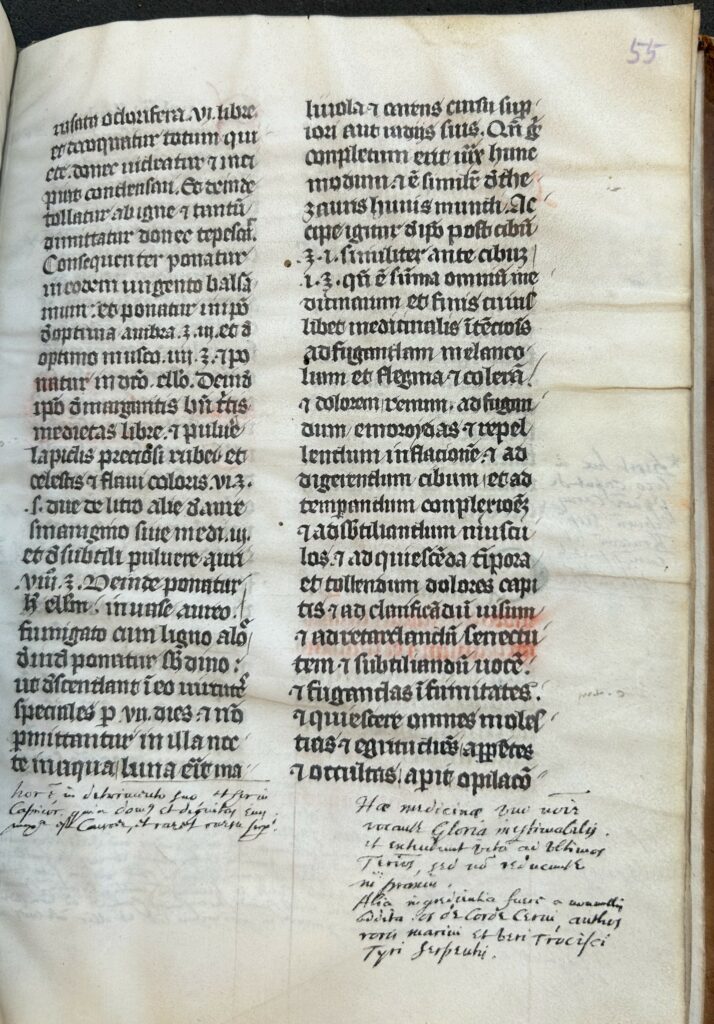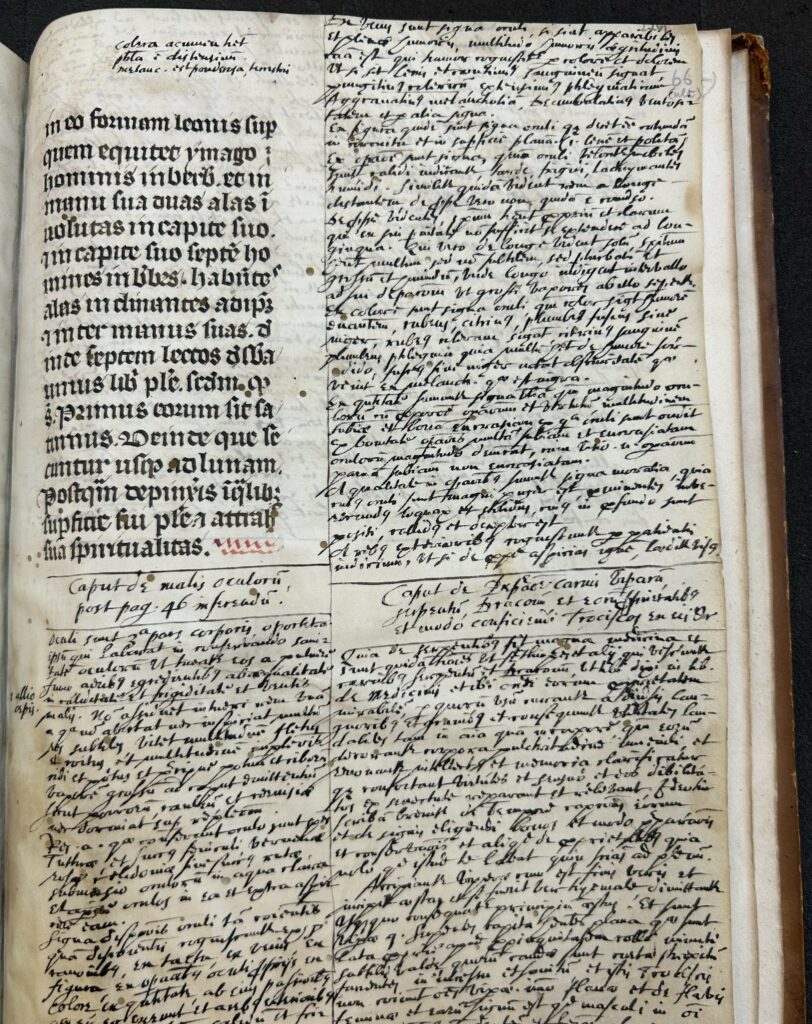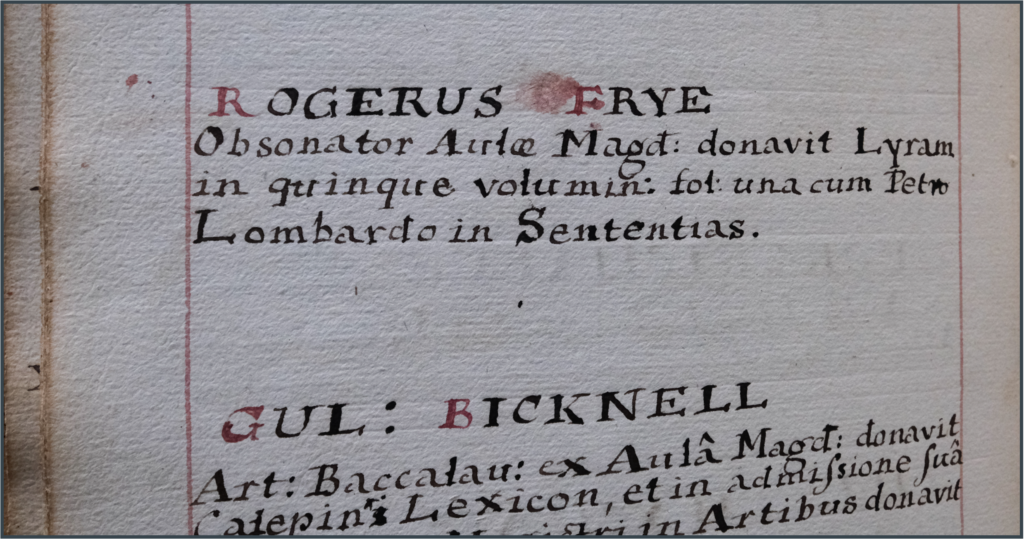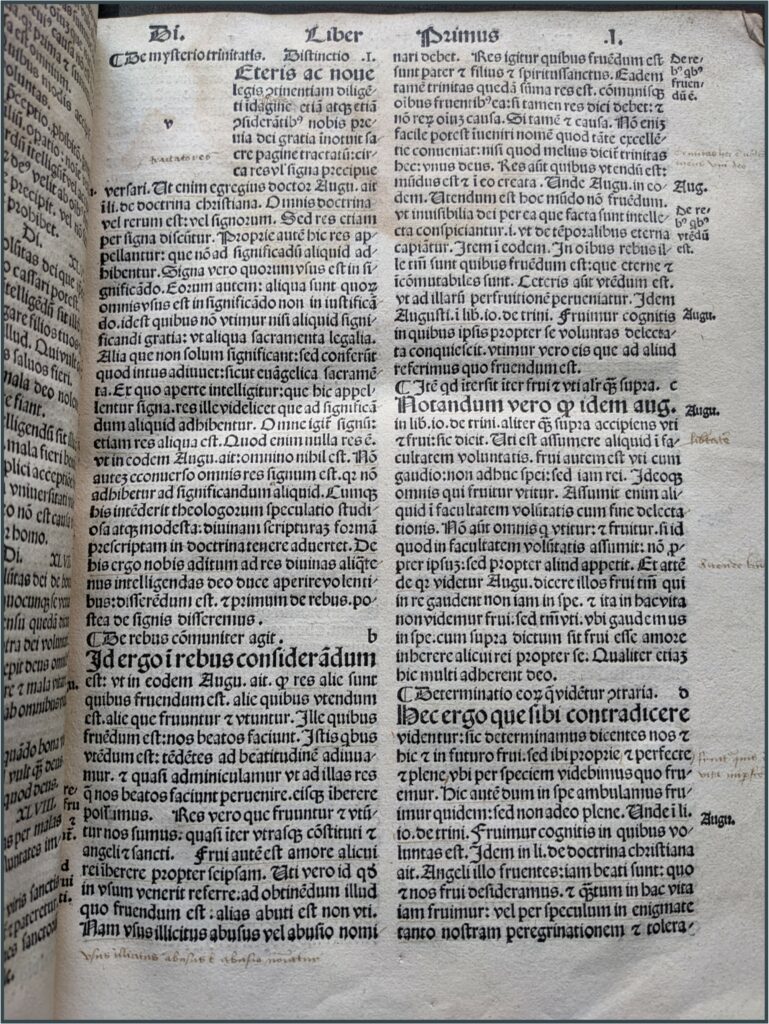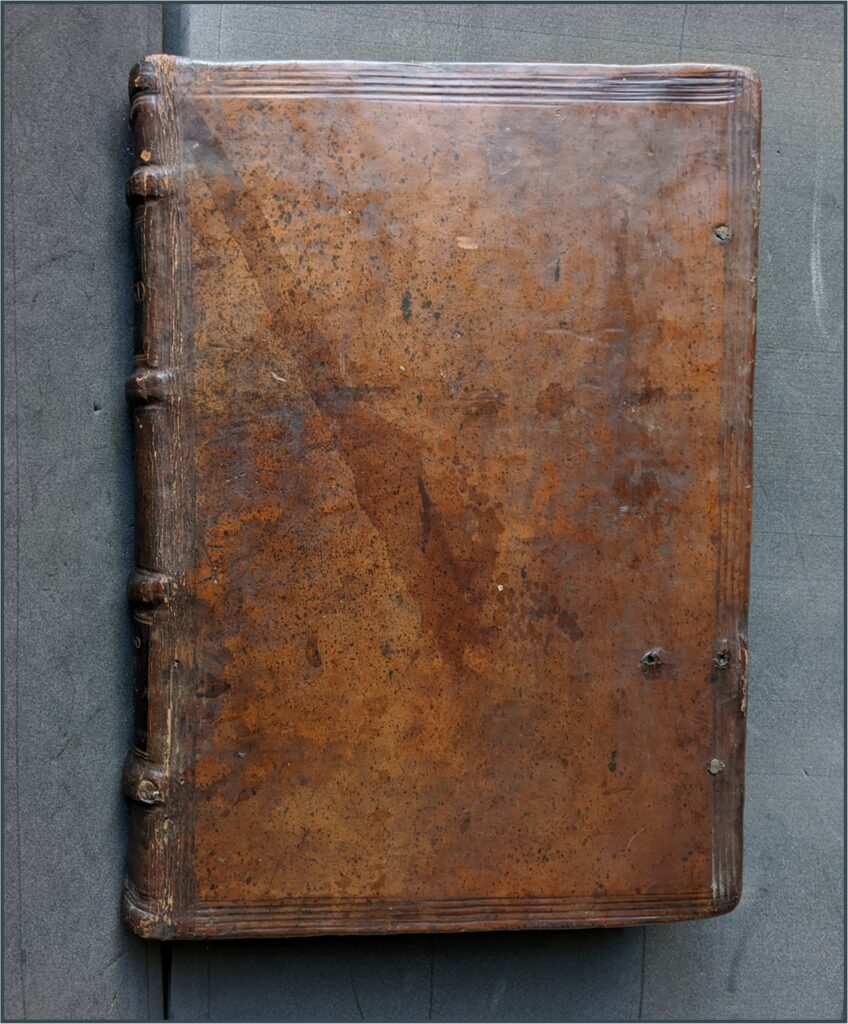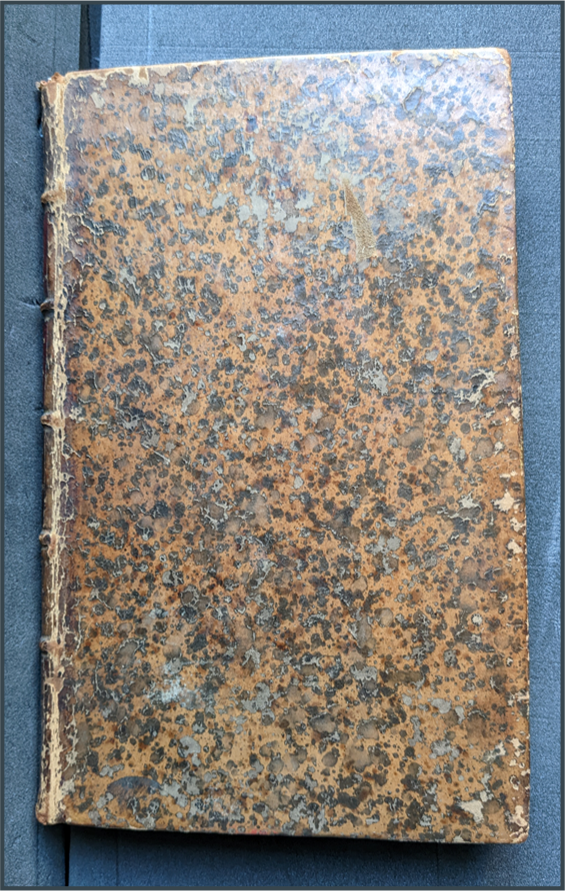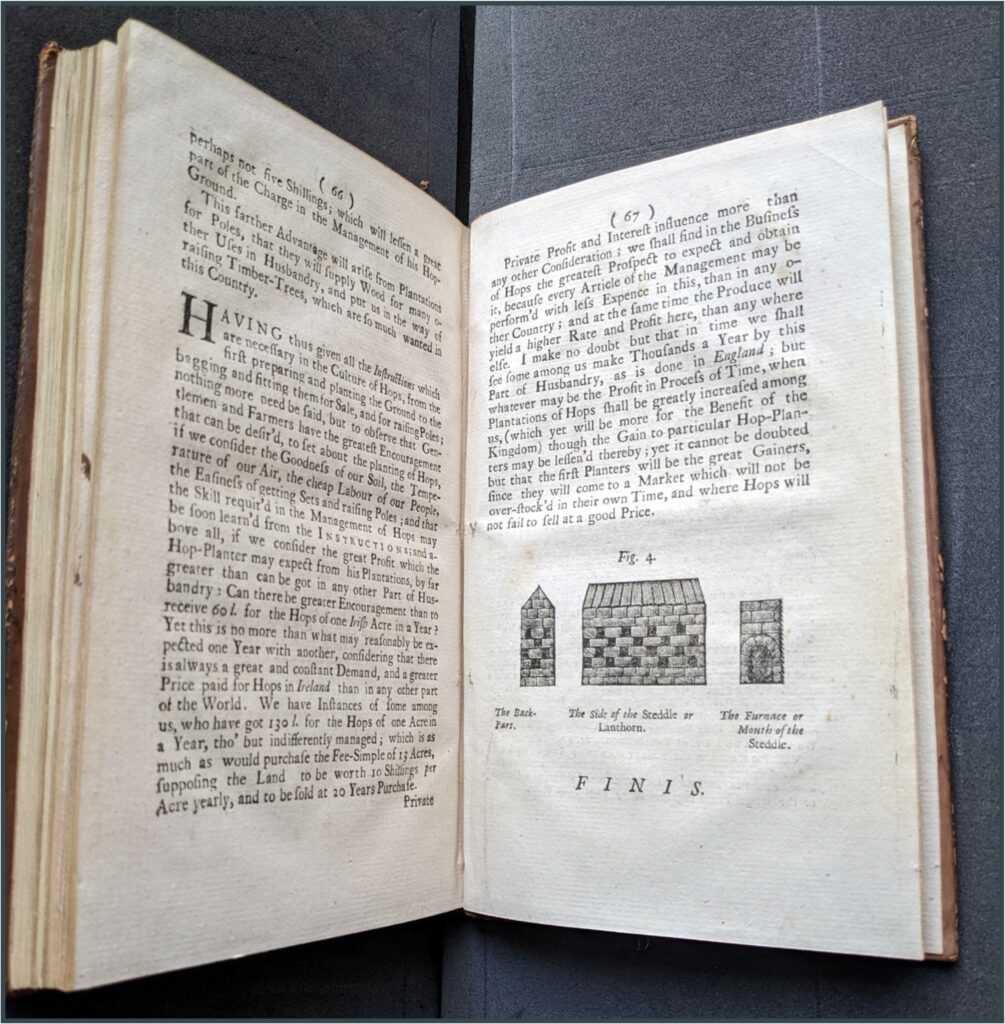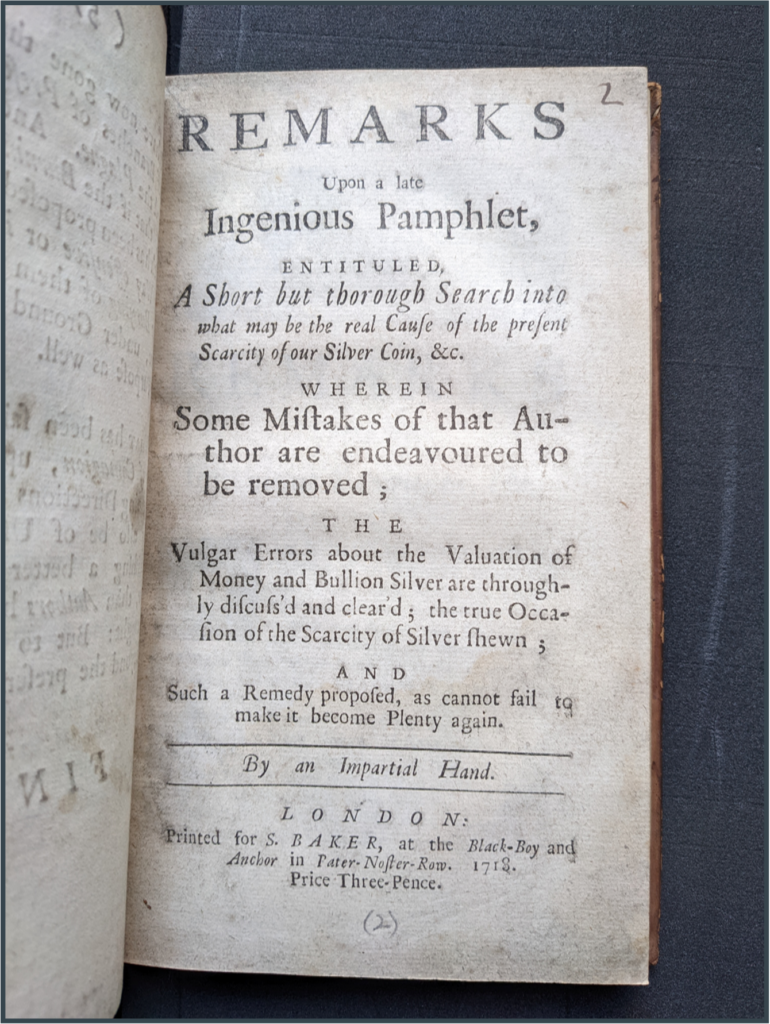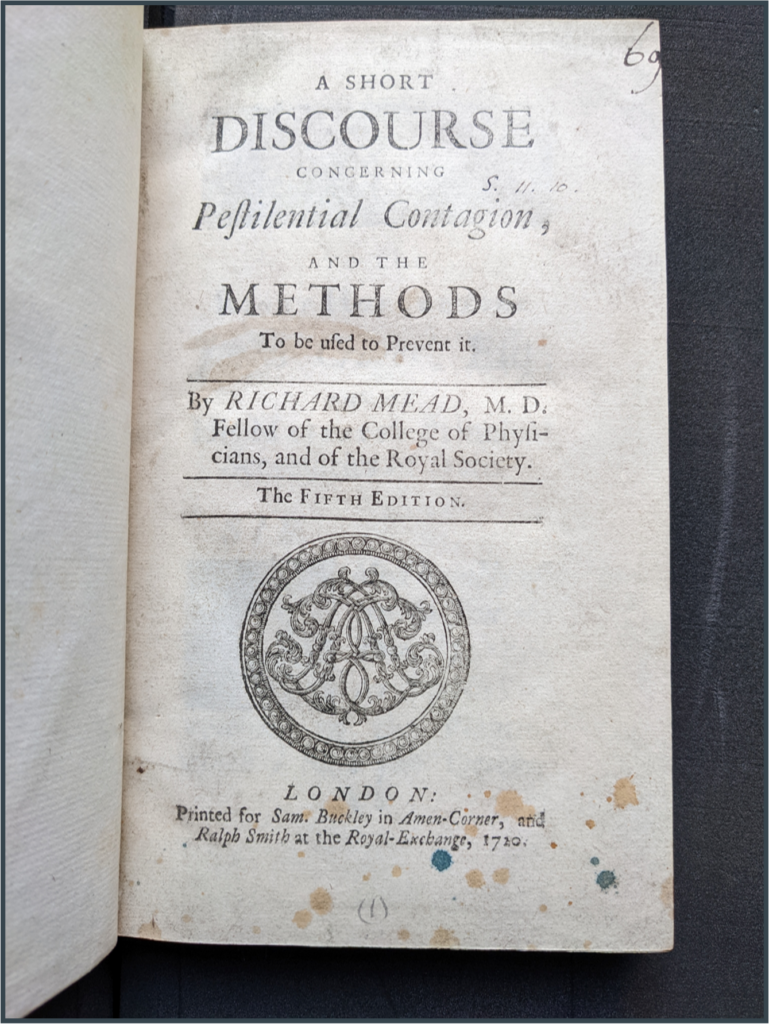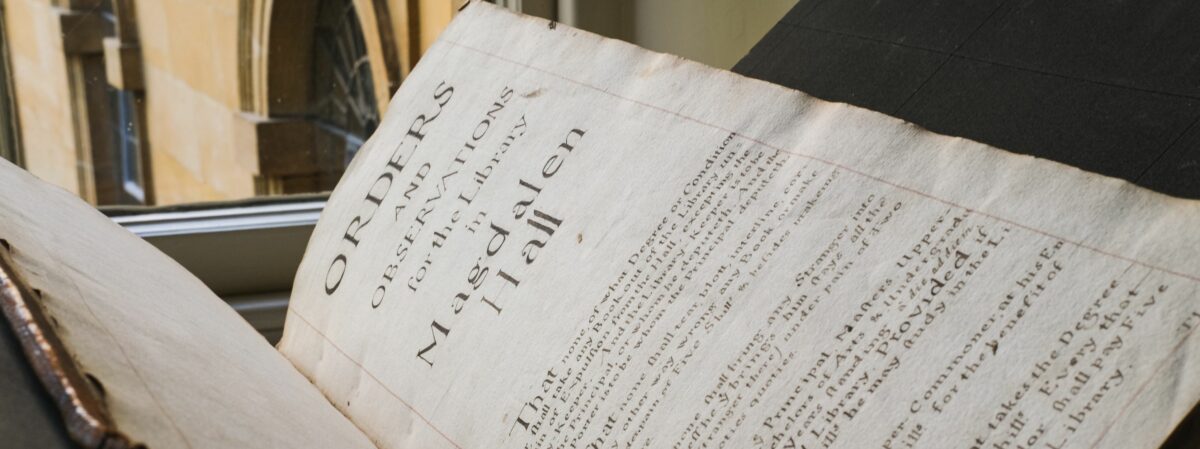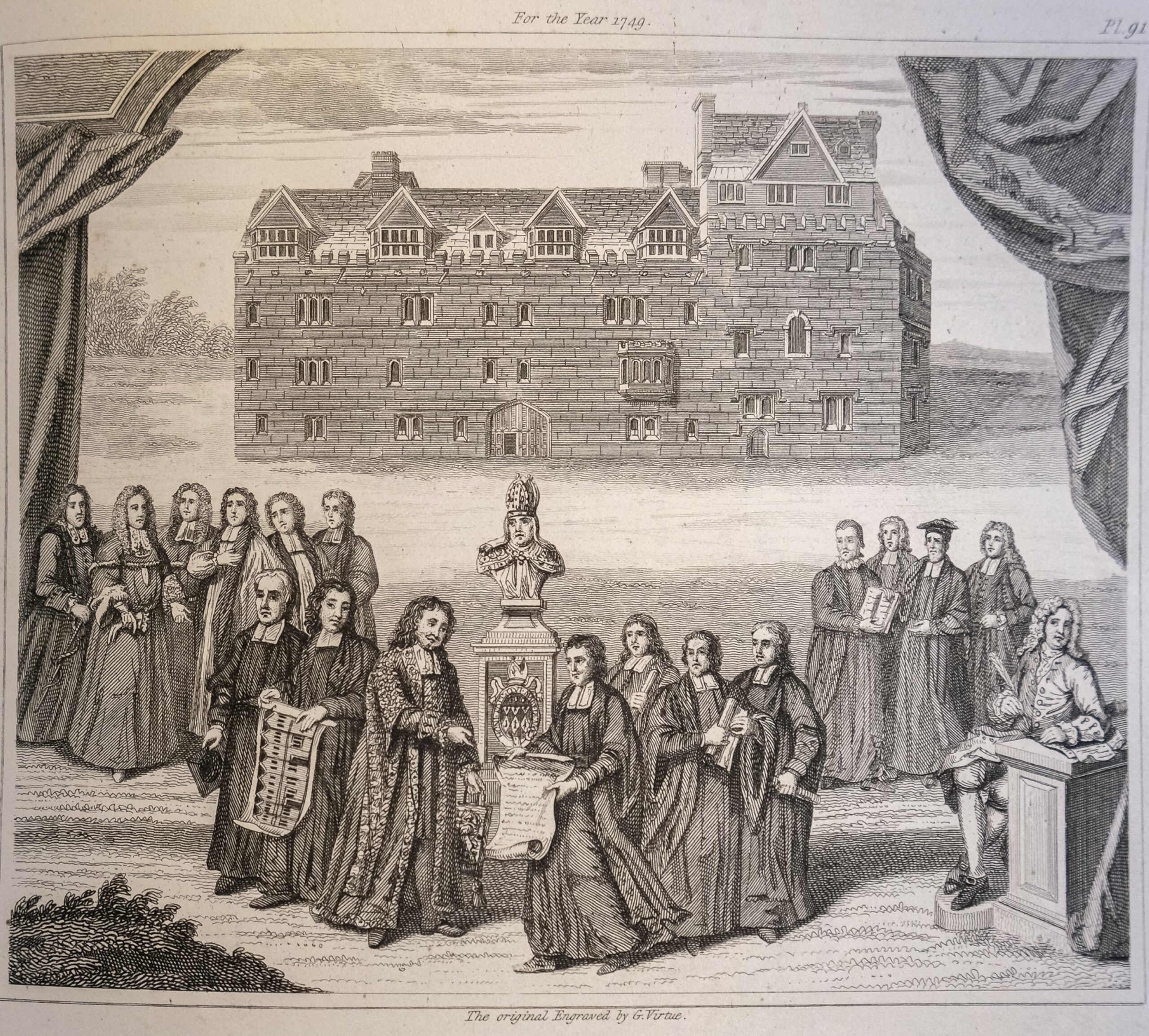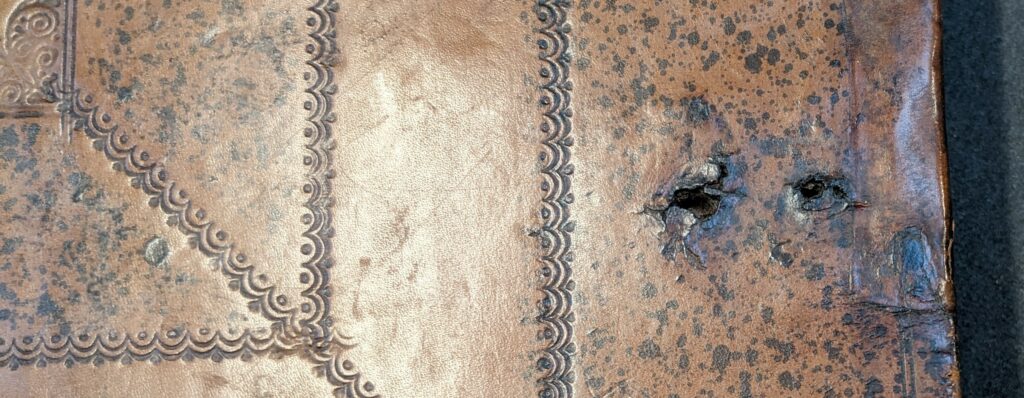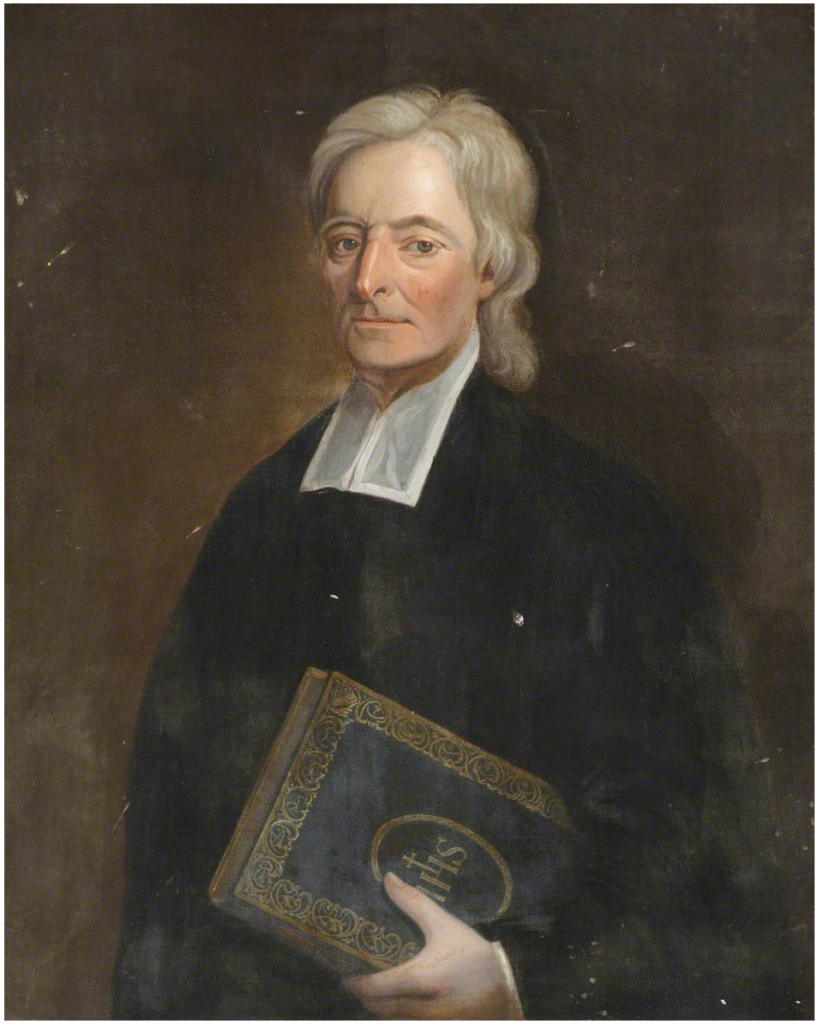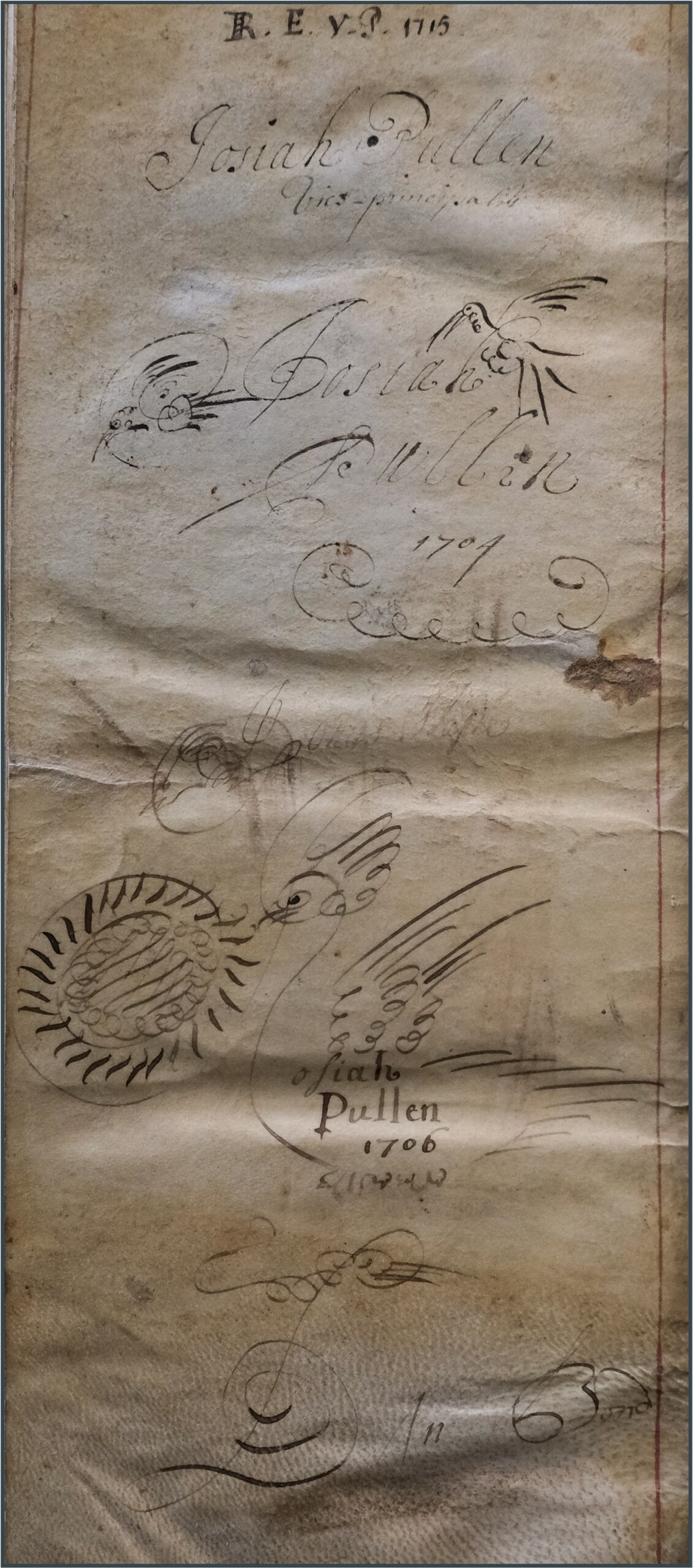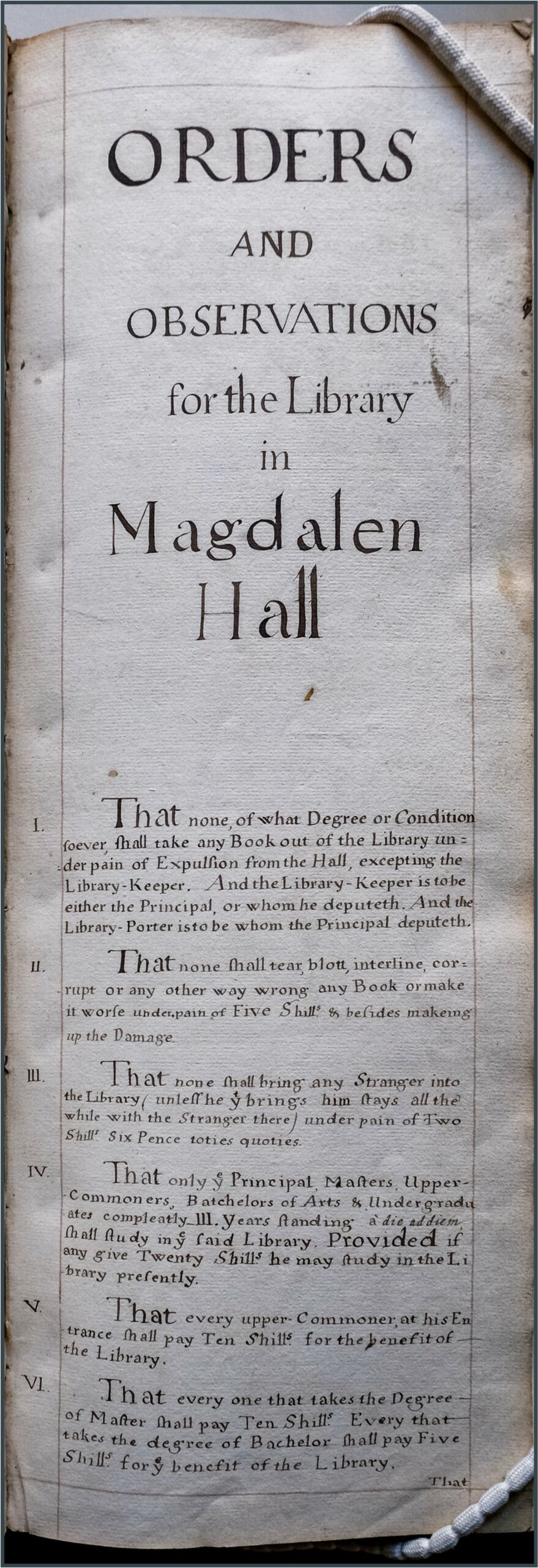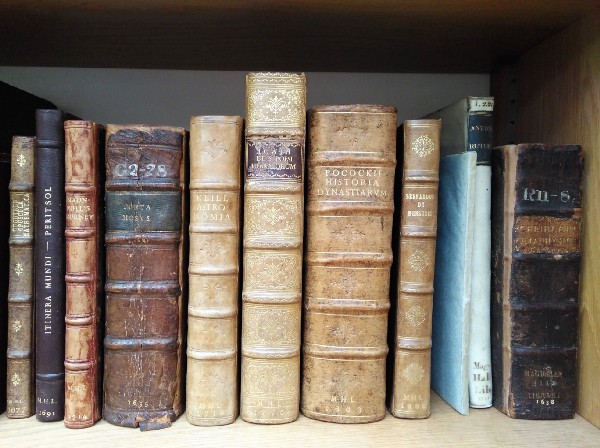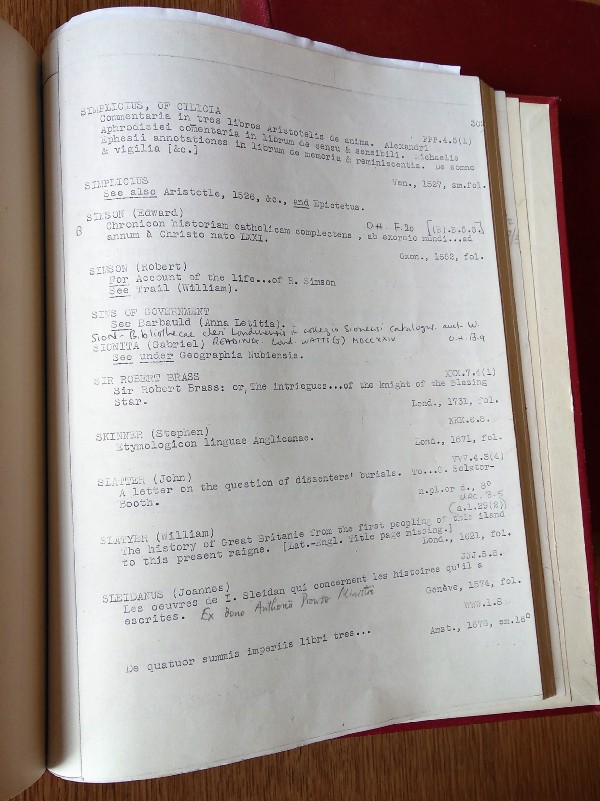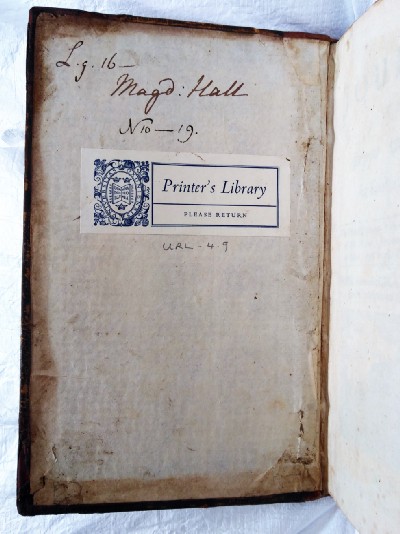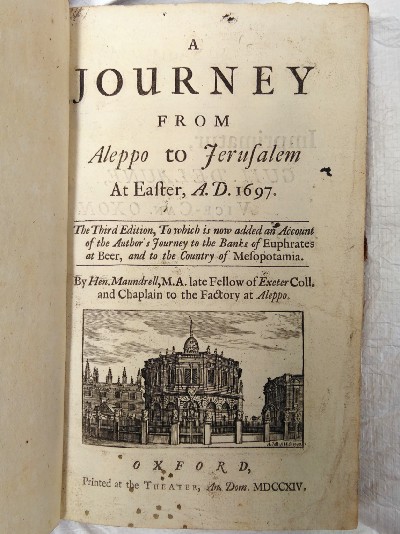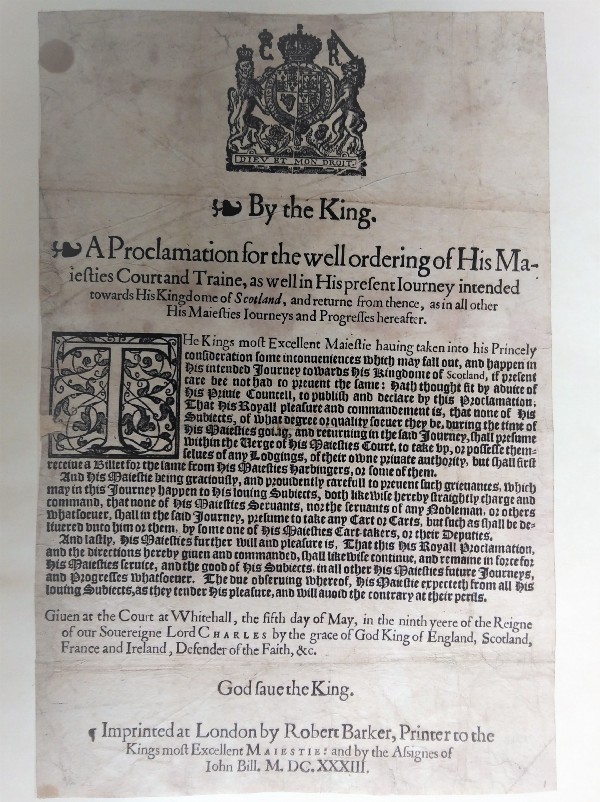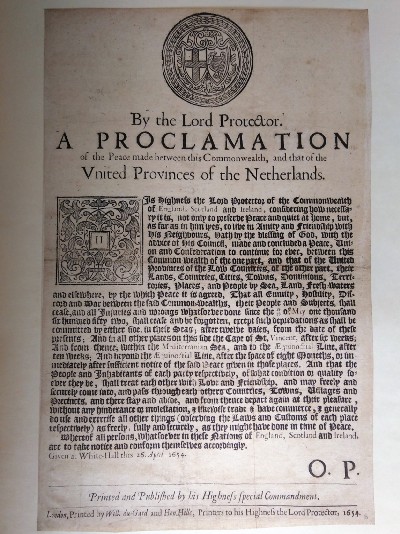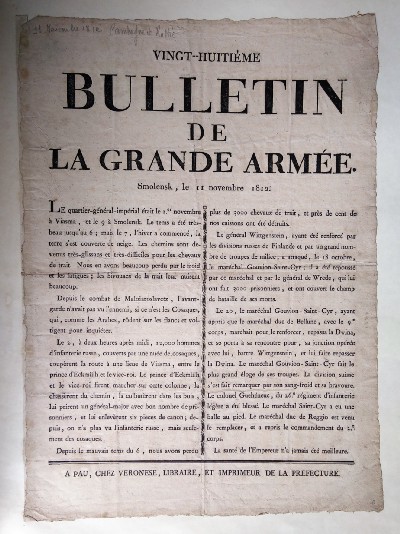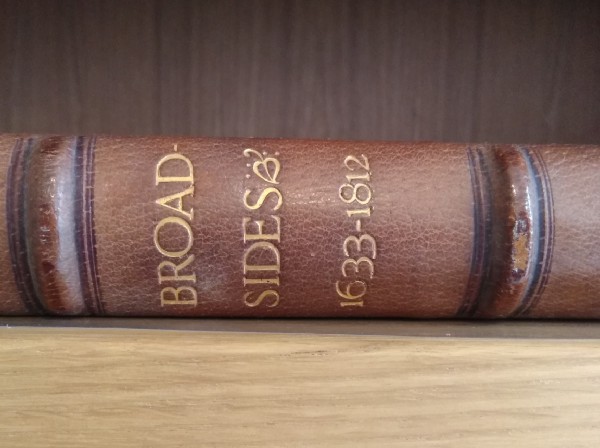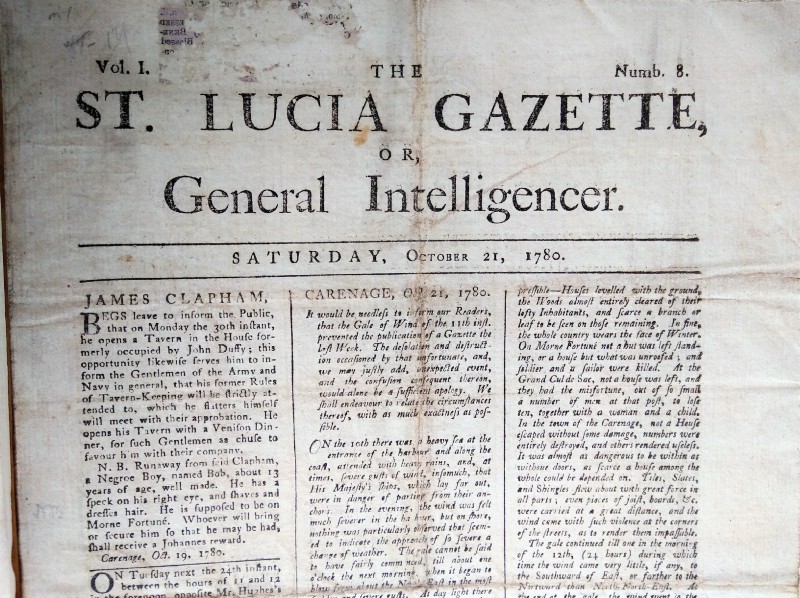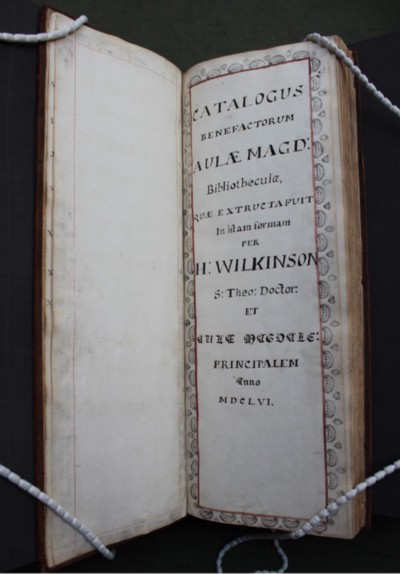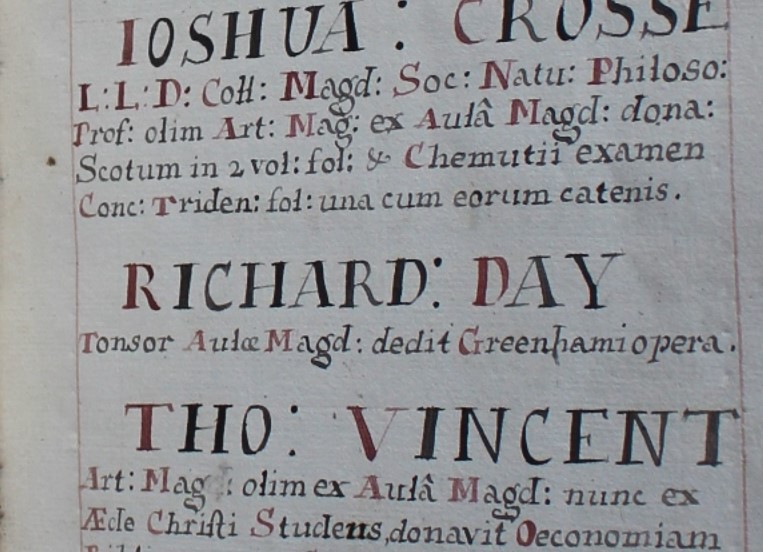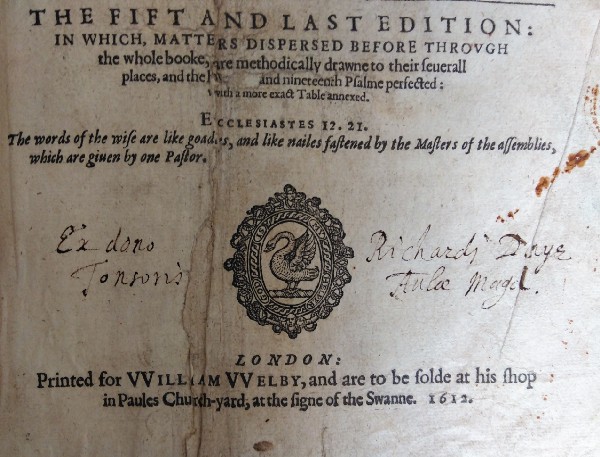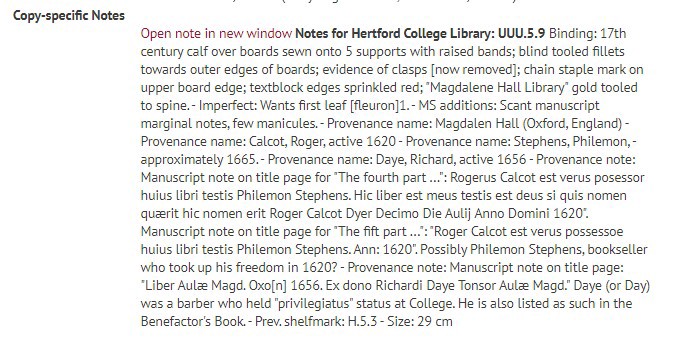Hertford College Library’s Michaelmas Term 2023 rare books display included a selection of items that have recently been worked on by the library team. Over the past year the team have also been preparing the collection for the library’s renovation project, packing up material for specialist storage.
The display was curated by Sophie Floate (Rare Books Cataloguer), Alice Roques (Librarian) and Katherine Knight (Assistant Librarian).
Guard book of 15th century fragments, Hertford College MS 41
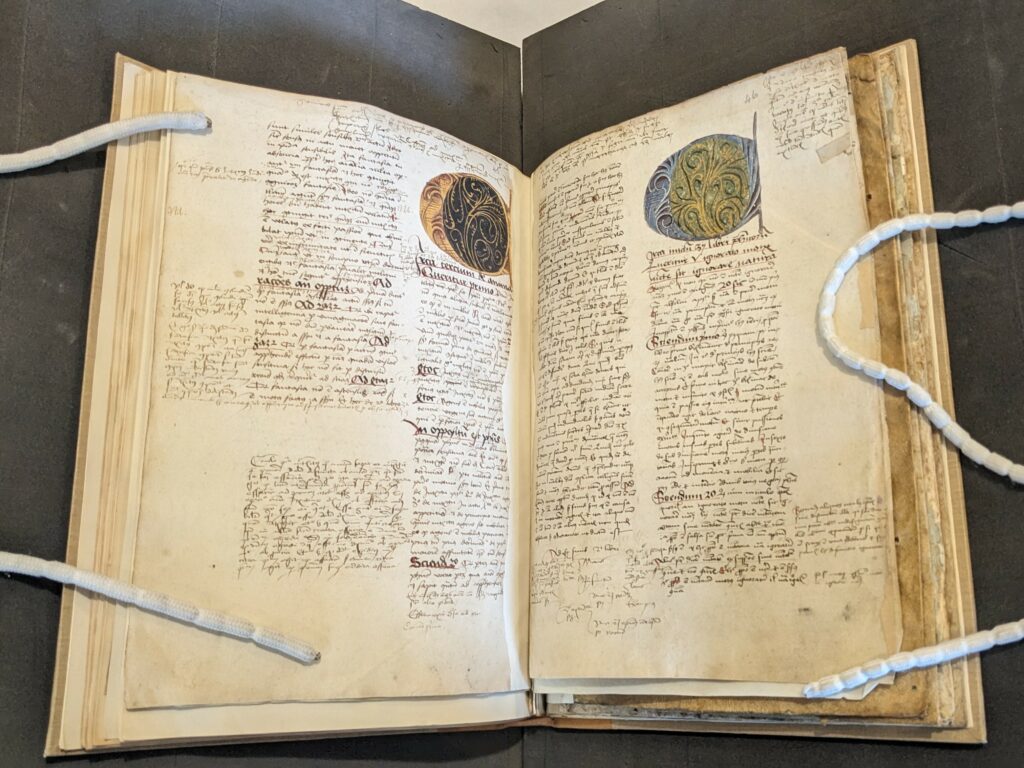
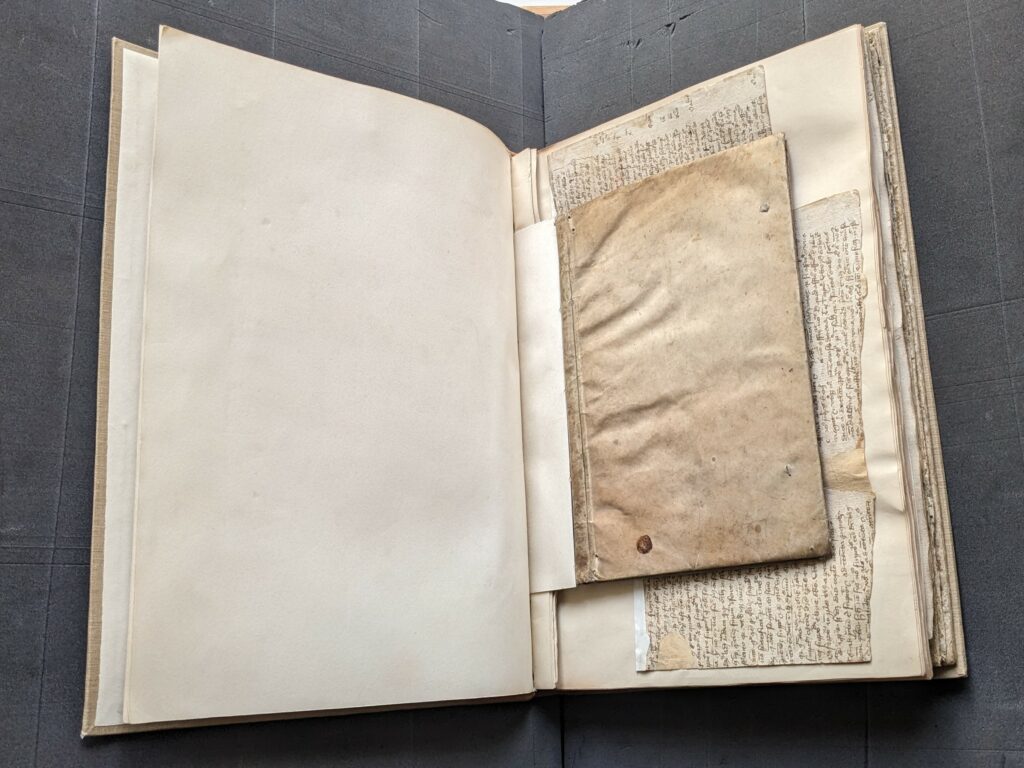
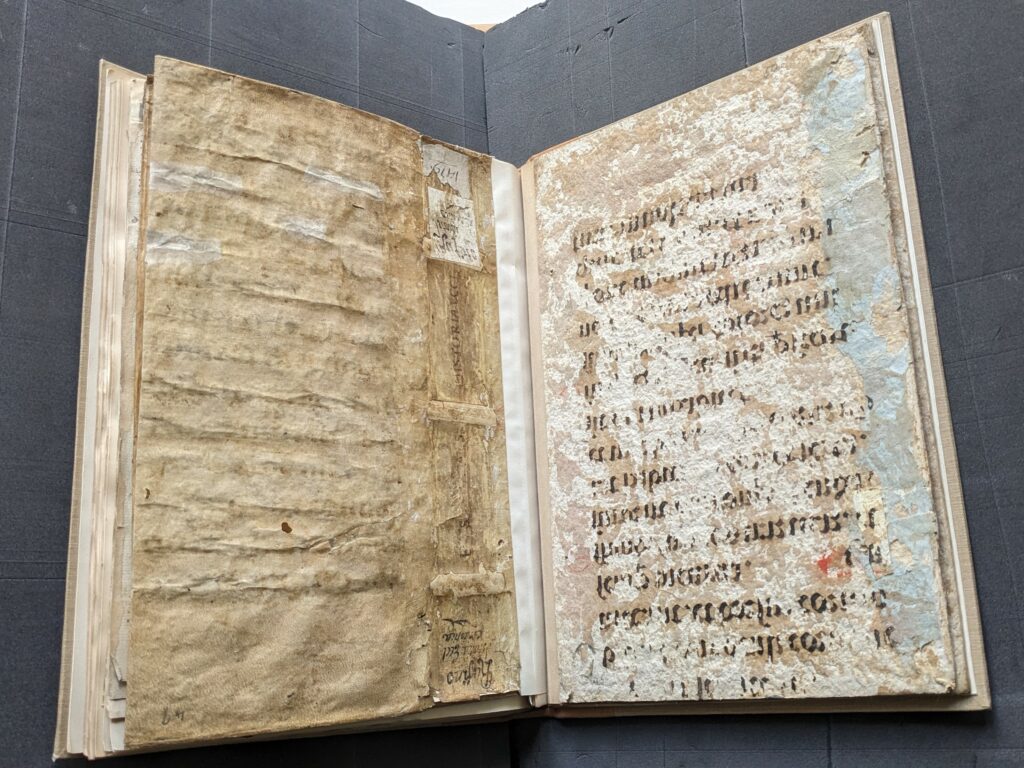
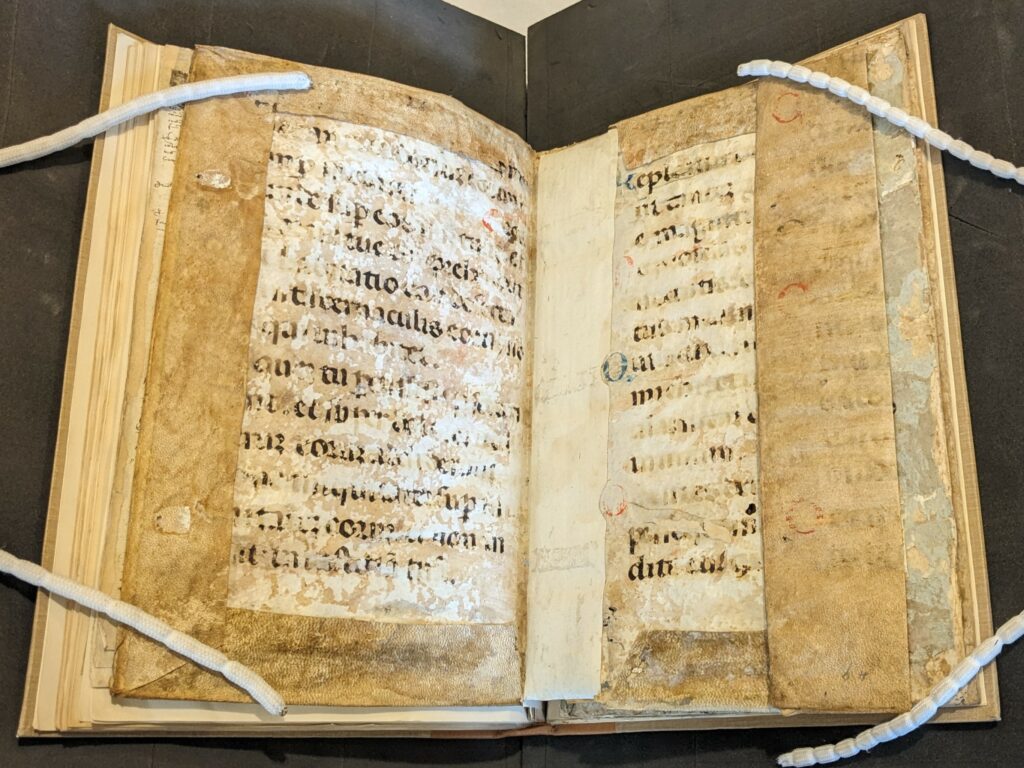
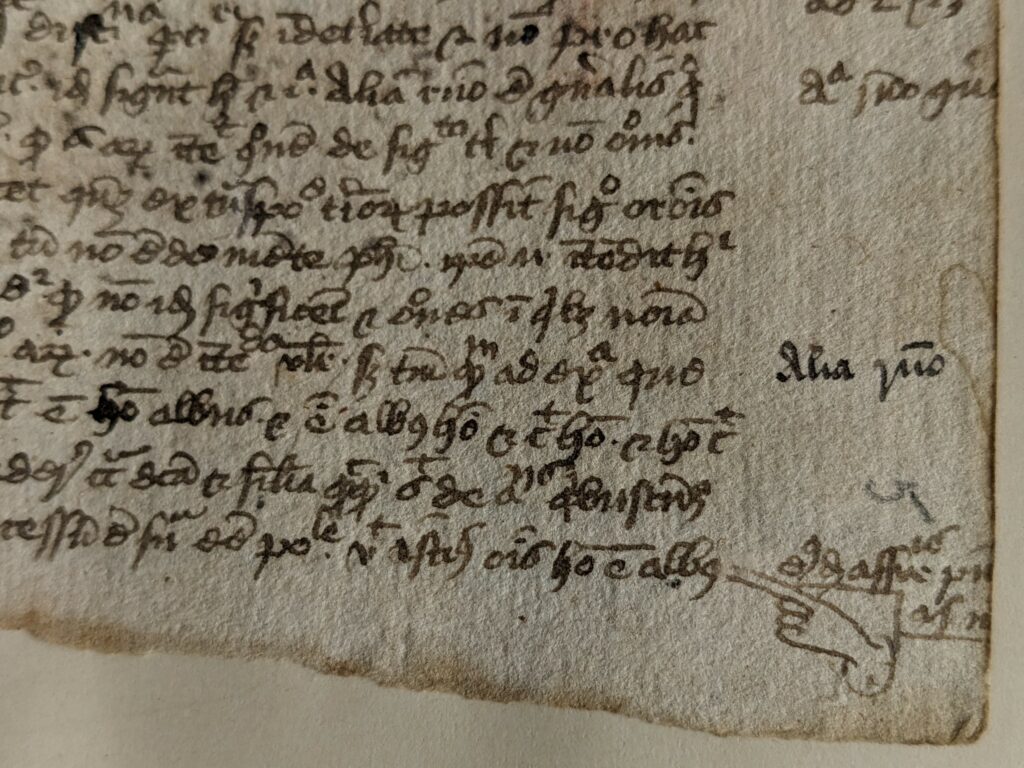
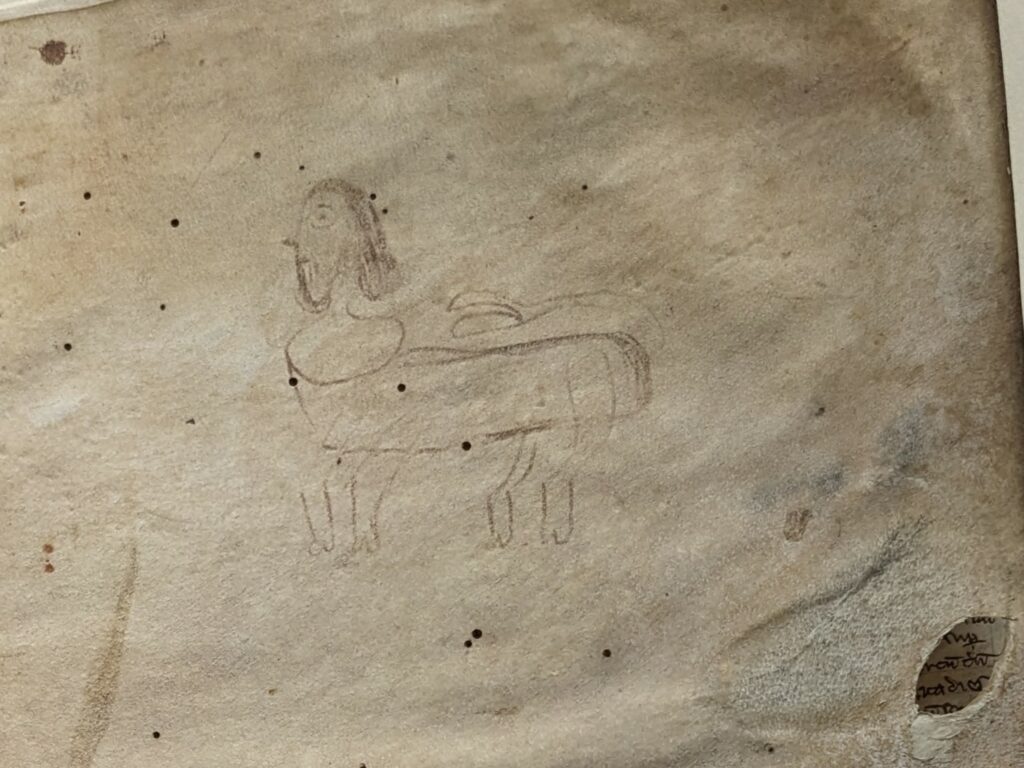
This is a guard book – a book with ‘guards’ or stubs that various loose sheets are attached to. Bound in 1954, this guard book contains various manuscript (i.e. handwritten) fragments from works made in the 15th century. Some of these pieces were treated as scrap material and recycled, probably in Oxford, into later bindings for other books. Finally, at a later date, they were rescued from these bindings and preserved in this guard book.
Thanks to the work of Sophie Floate, Hertford’s rare book cataloguer, and the Bodleian Special Collections team, information about this guard book is now available in the free public website that lists manuscripts in Oxford. This means it will be easier for researchers from all over the world to discover.
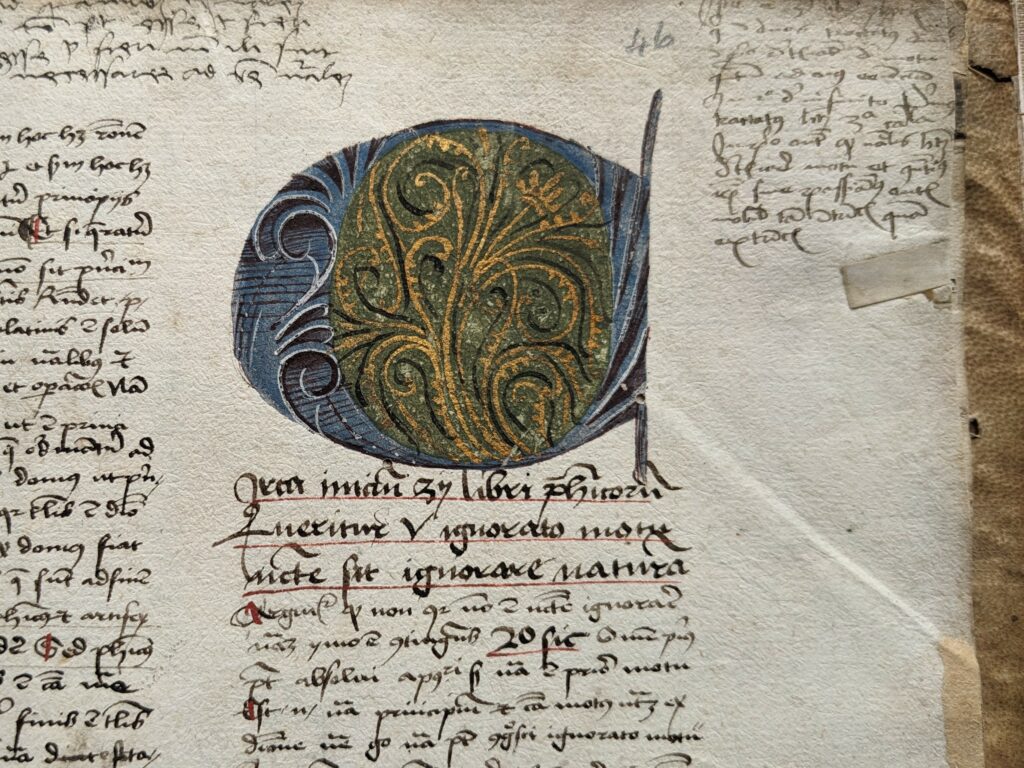
The volume includes a beautiful section of Johannes Versor’s 15th century Commentary on Aristotle and other works in Latin, German and Italian. There are a number of illuminated initials at the beginnings of columns in Versor’s work, showing very finely detailed and colourful patterns with gold.
View the record for this manuscript in the online Medieval Manuscripts in Oxford Libraries catalogue
Cyrano de Bergerac, The Comical History of the States and Empires of the Worlds of the Moon and Sun, trans. Archibald Lovell, (London, 1687)
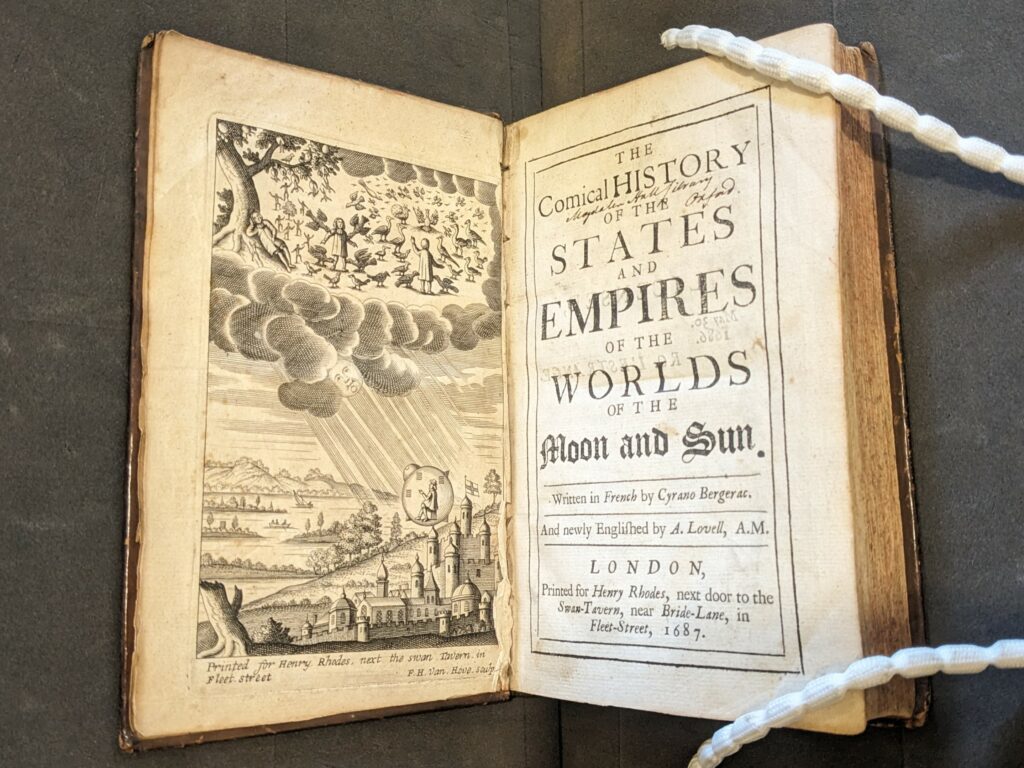
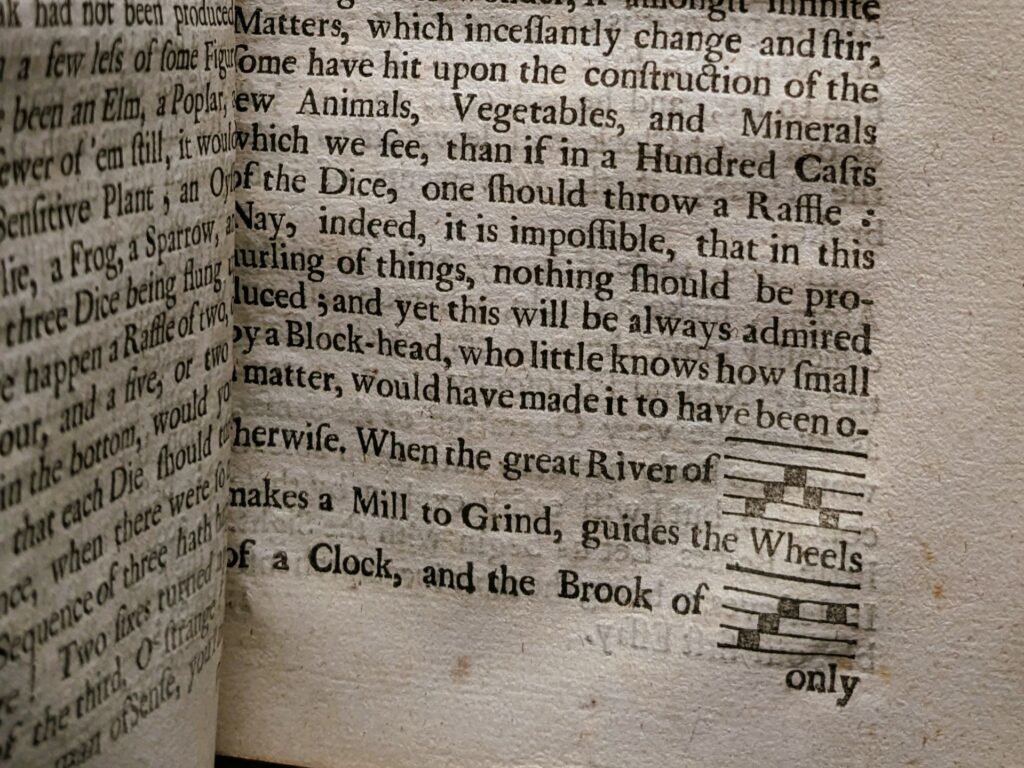
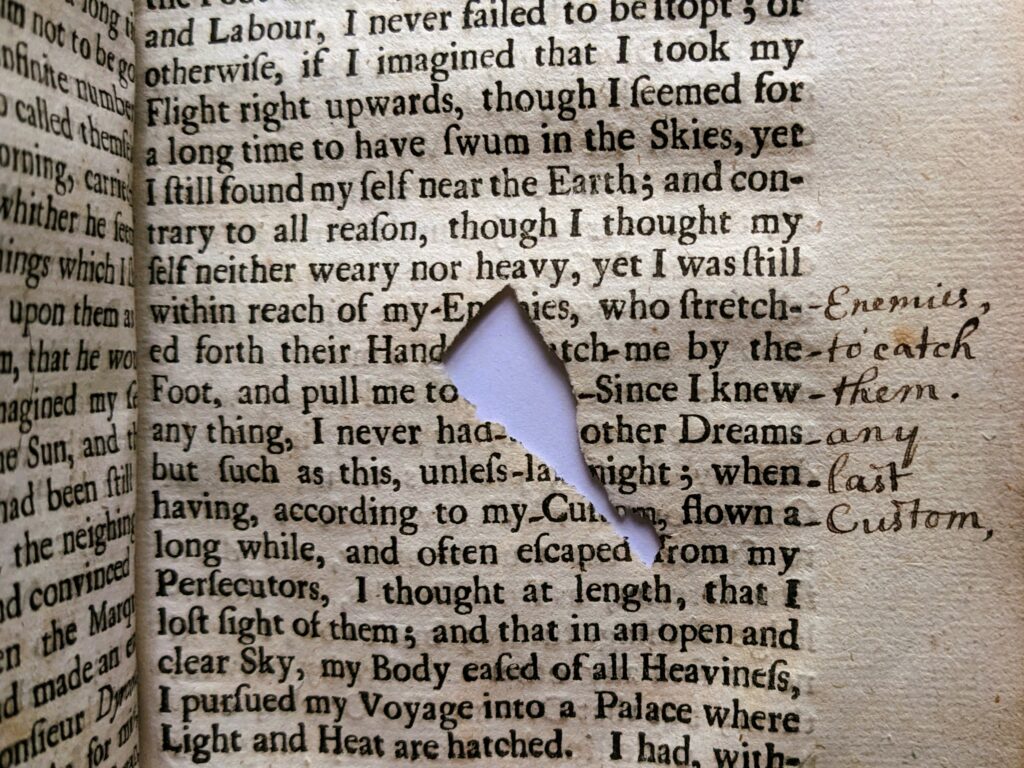
Hertford’s rare books cataloguer, Sophie, has also been working on the college’s early printed book collections to create online records that meet modern standards. This means that information is being added to the SOLO website about each book, including descriptions of bindings, additional handwritten notes (marginalia) and details of previous owners (provenance). The data is publicly available and searchable, making it easier for our collections to be discovered by researchers.
This book is an English translation of a set of works first published by Cyrano de Bergerac in French. They are recognised as some of the earliest works of science fiction and an influence on authors like Hertford alumnus Jonathan Swift (author of Gulliver’s Travels).
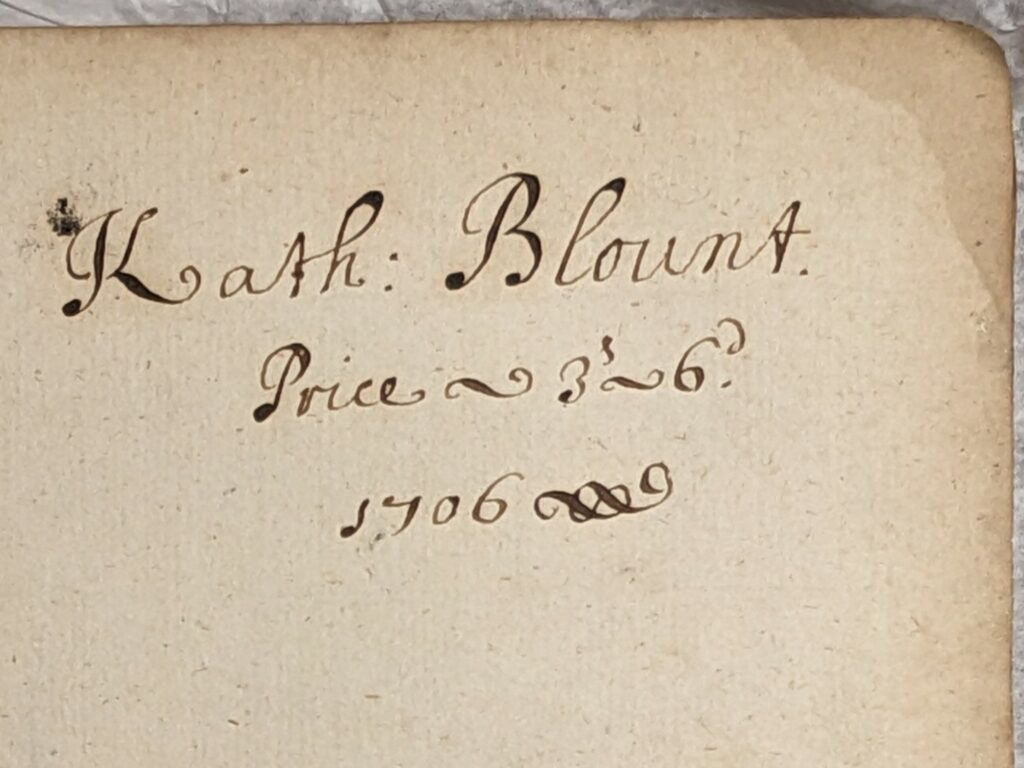
The book was owned by Katherine Blount, who has recorded her name, a date and the price at the front of the book. Sophie’s cataloguing uncovered this previously unrecorded information and she shared her findings further in a blog post for the Early Modern Female Book Ownership project. Subsequent work by other researchers has uncovered further books owned by Blount in other collections, including a manuscript collection of sermons by John Donne (a Hertford alumnus) now housed in the St Paul’s Cathedral Library.
View the record for this book in the online SOLO library catalogue
Set of Astrological Works, 17-18th century
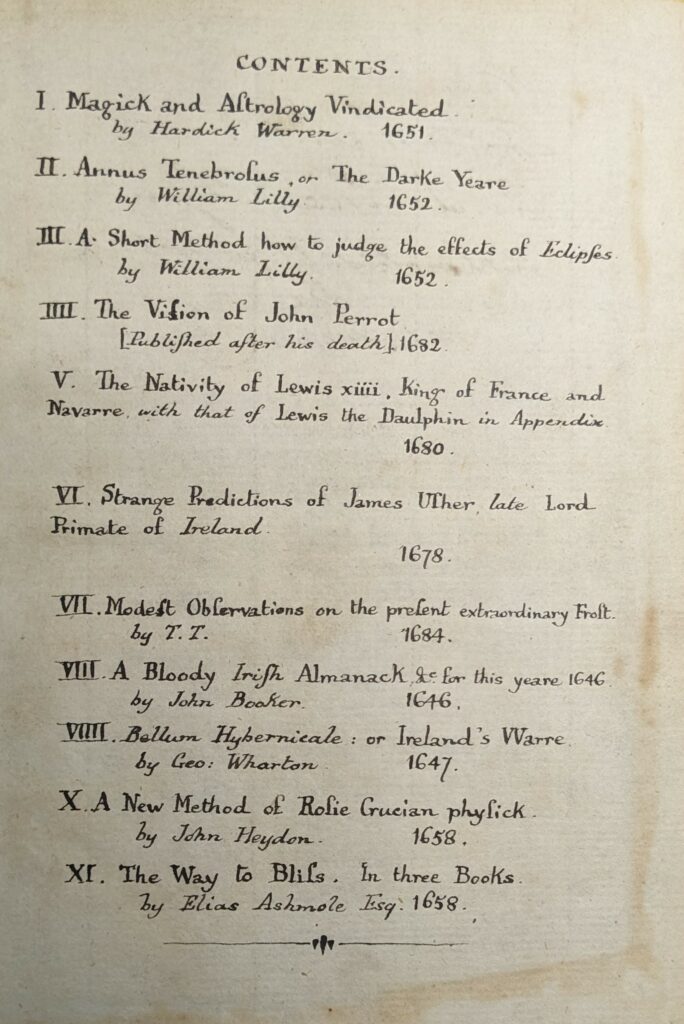
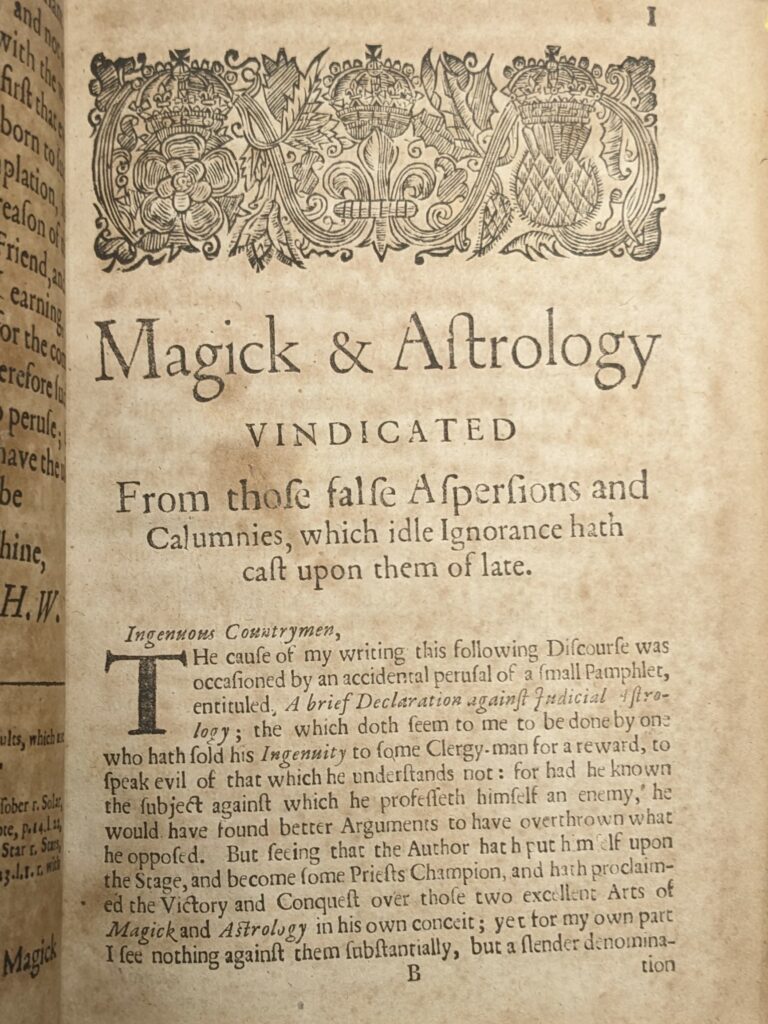
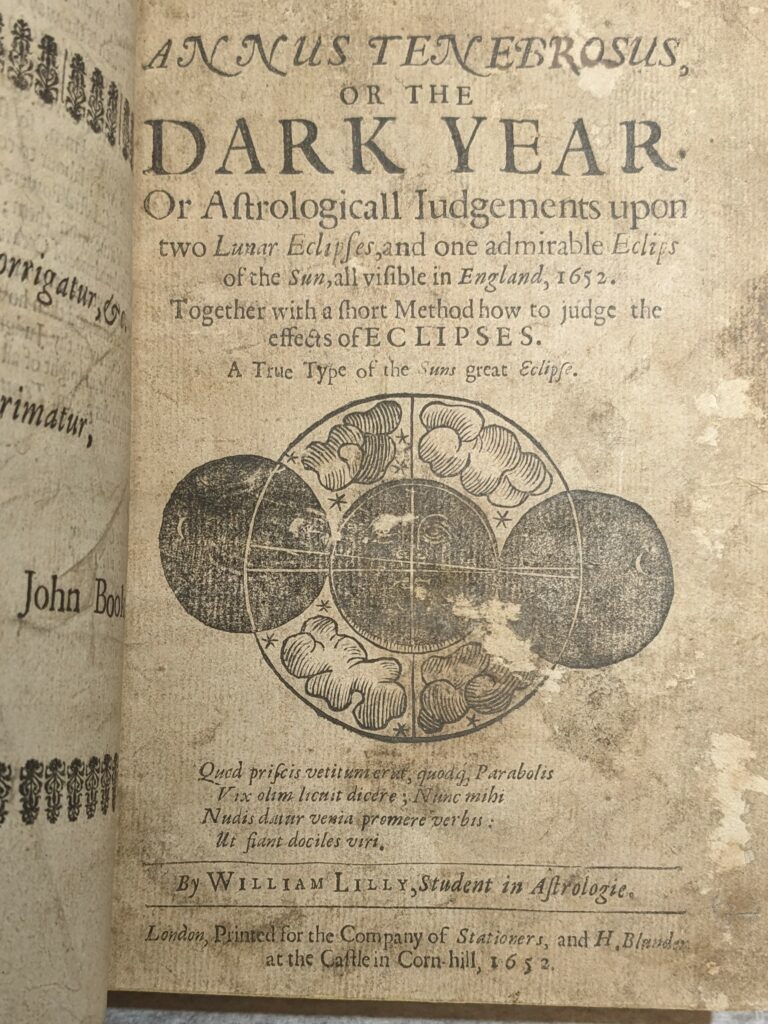
Hertford’s early printed book collections contain a very wide array of subjects. Along with standard theological and classical works, there are also many scientific, geographic and popular texts. Many of the books were owned by other people before they became part of Hertford’s collections. It was common for multiple short works to be gathered together and bound into a single book. Sometime booksellers intentionally sold sets of works bound together but many others were bought individually and bound in an entirely unique combination by their owner. This item is a collection of books about astrology. Each item has its own individual description on the SOLO library catalogue.
The book includes a fold out item showing a hand-coloured, illustrated timeline of the world that goes back to biblical times and into the future. This is a particularly rare item. One other copy is known to exist in the British Library according to the English Short Title Catalogue website.
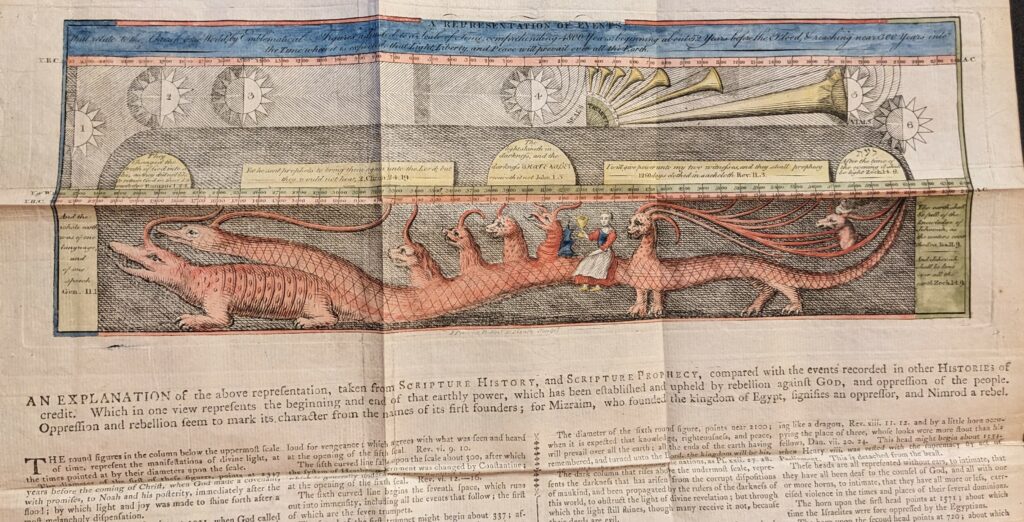
As well as cataloguing items on SOLO, relevant information about Hertford books is also added to the internationally shared English Short Title Catalogue, which includes works from over 2,000 libraries around the world.
See all items in this volume in the online SOLO library catalogue
Thomas Hyde, De Ludis Orientalibus Libri Duo, (Oxford, 1694)
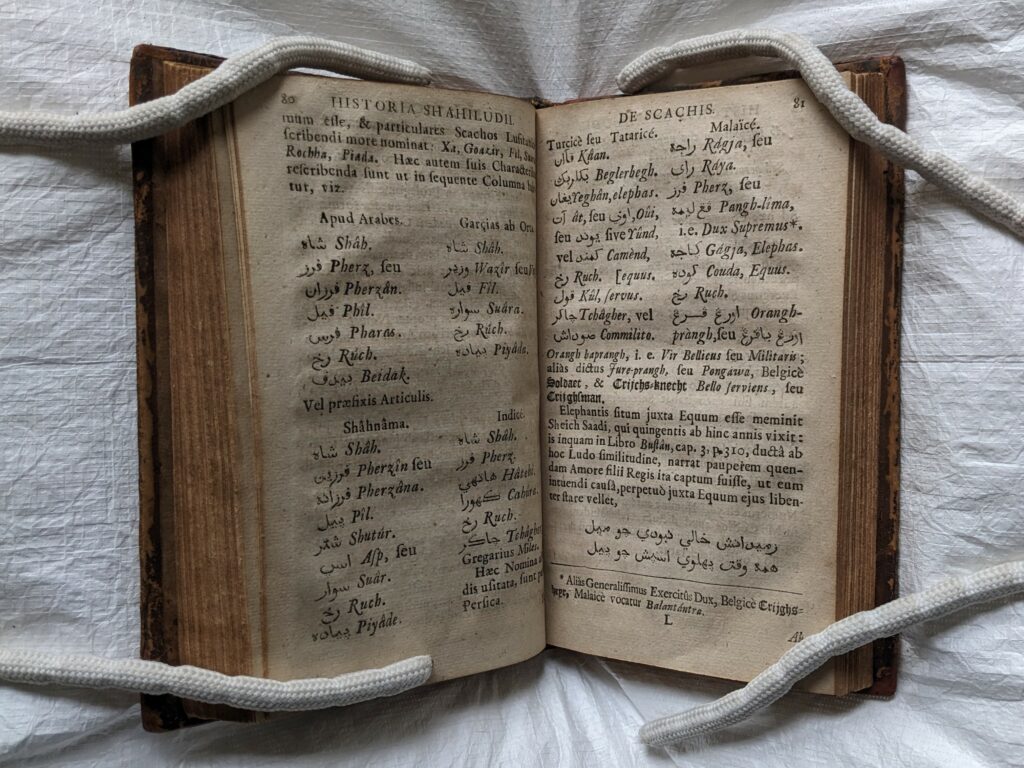
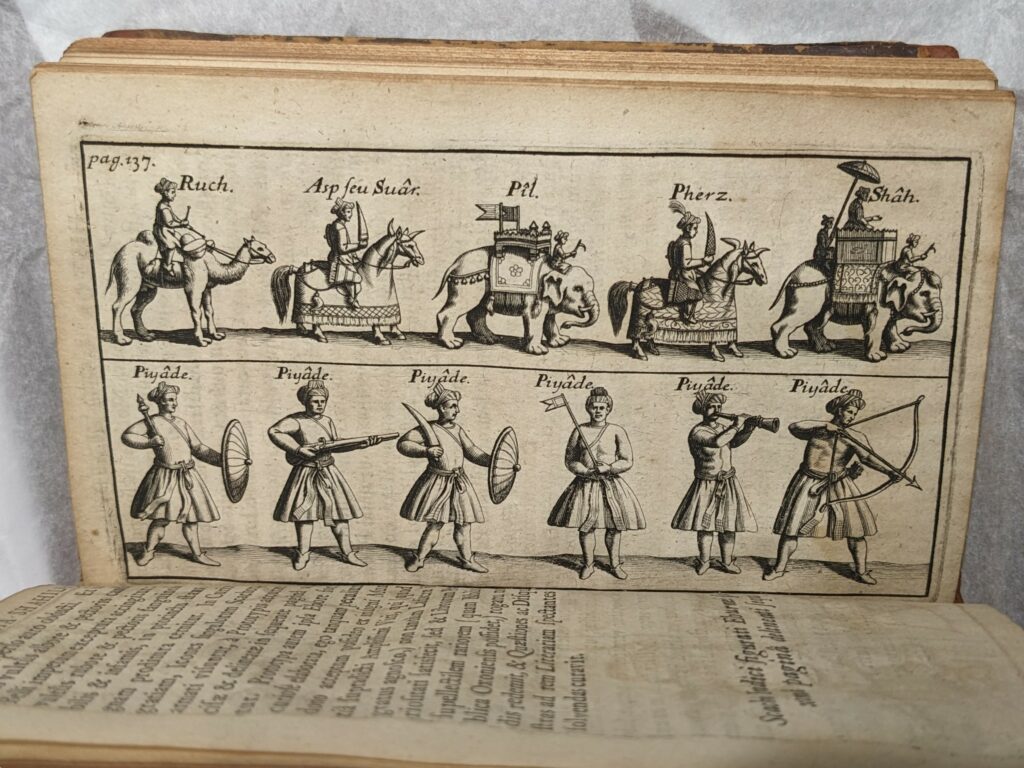
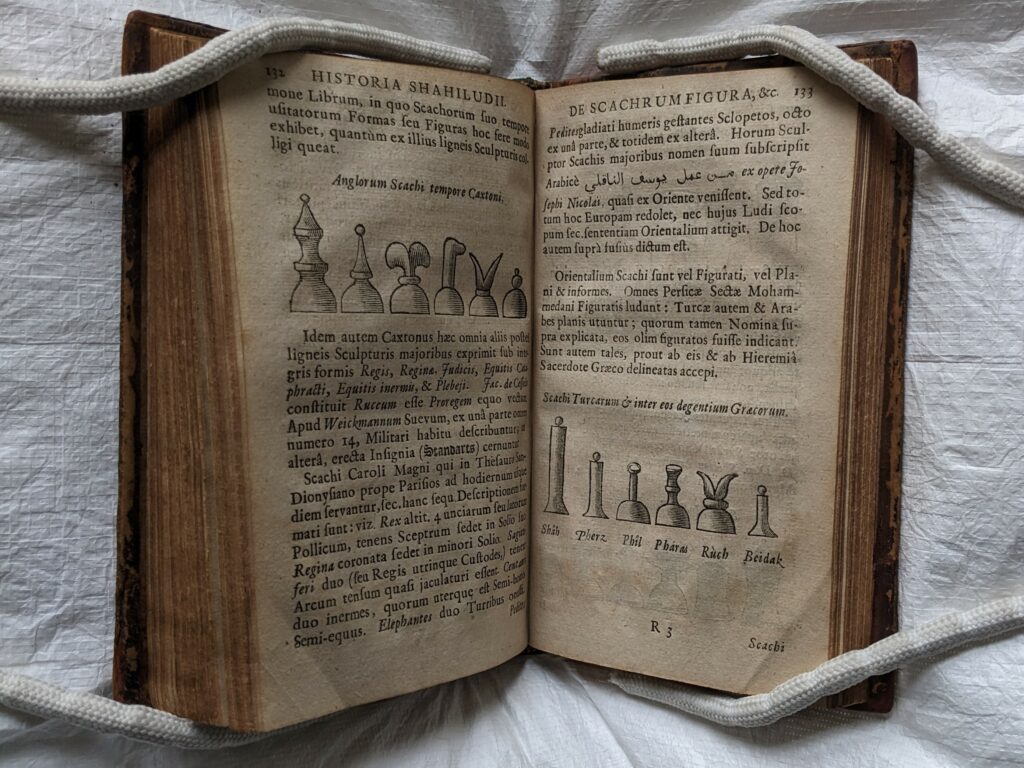
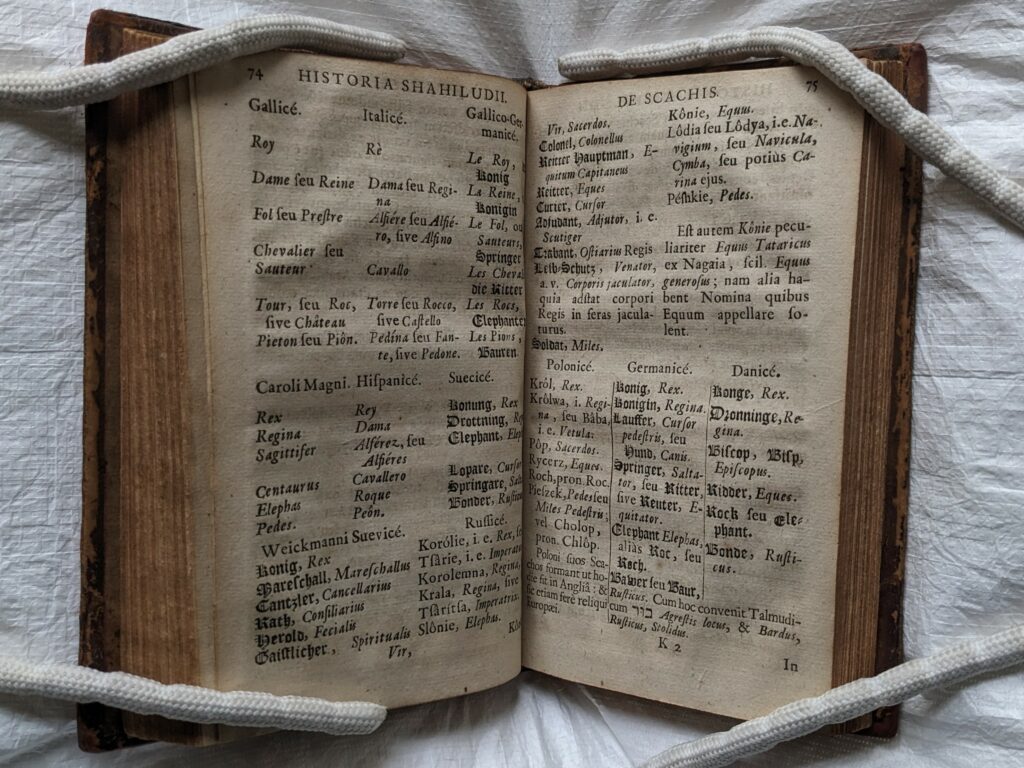
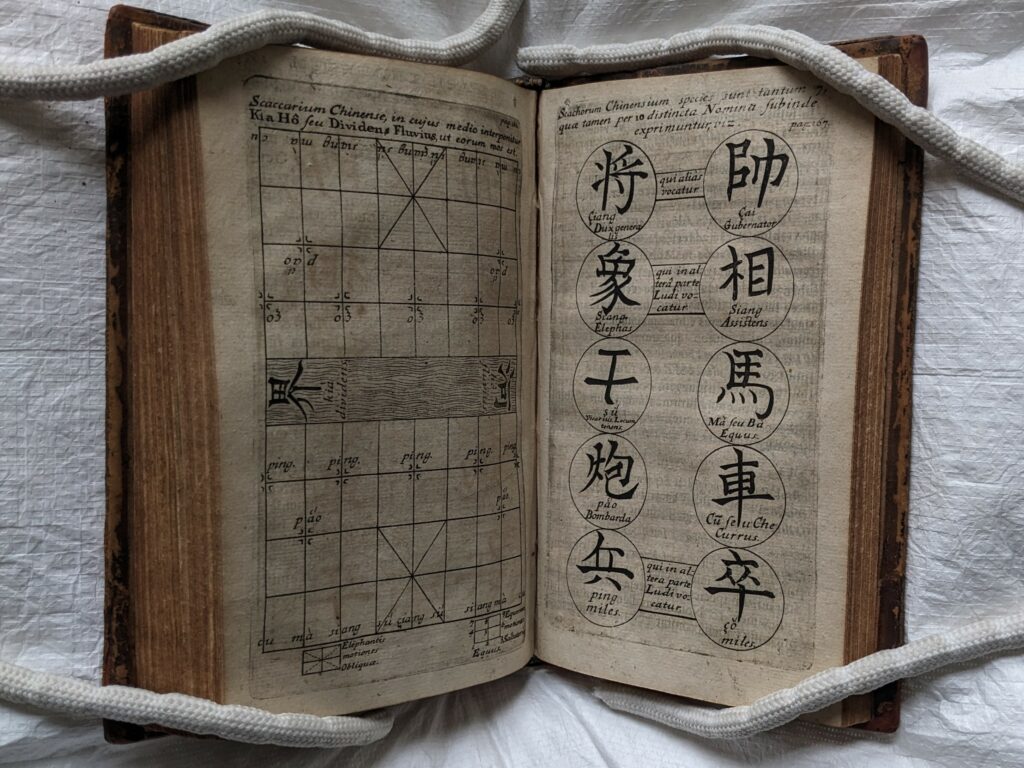
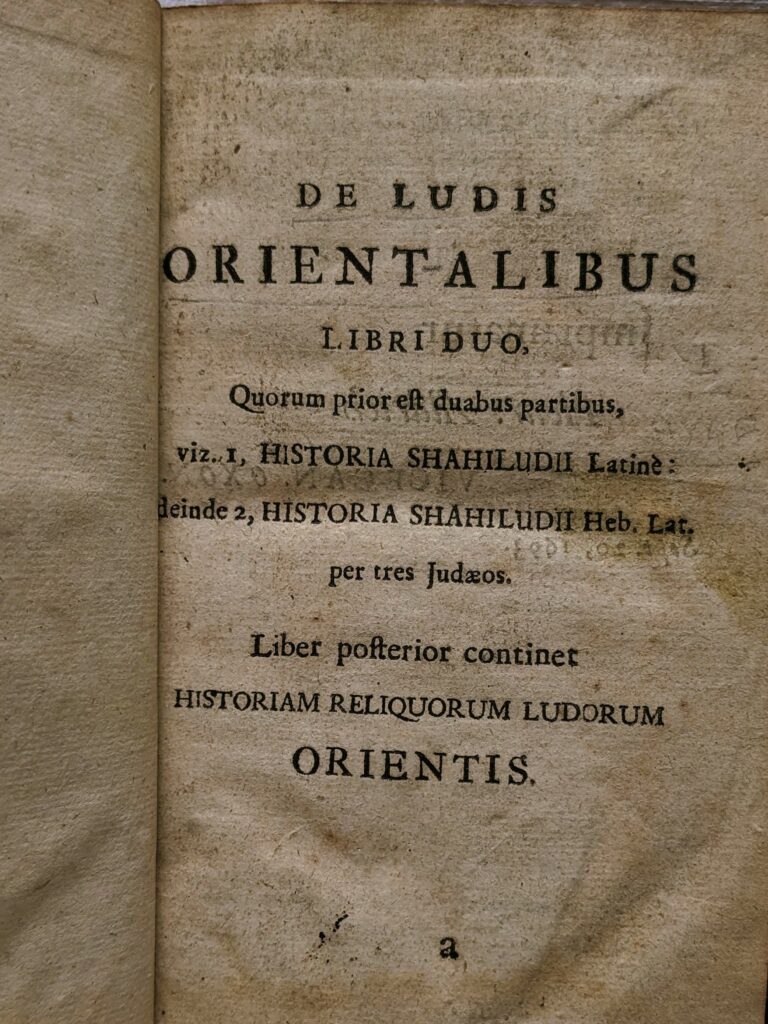
This history of chess and other games was written by Thomas Hyde (1636-1703), who was a scholar and translator of Asian and Middle Eastern languages and the Bodleian’s Librarian. It has engraved and woodcut pictures and diagrams and is written primarily in Latin but includes excerpts in Arabic, Hebrew, Persian, Sanskrit and Chinese. The book was made in Oxford, on printing presses in the basement of the Sheldonian Theatre.
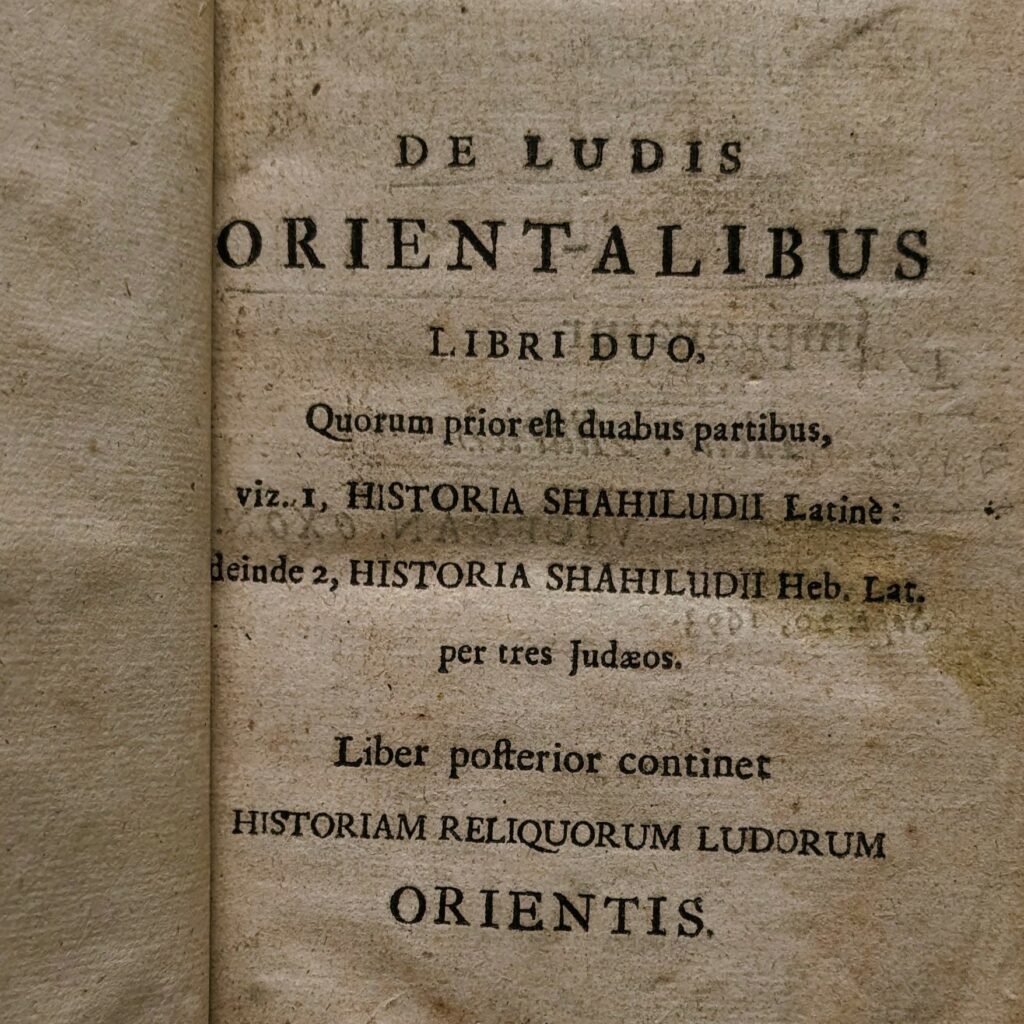
This copy of the book was loaned to the Oxford University Press Library by Hertford College, along with many other books printed in Oxford. As a result, these books were missed out of the previous printed catalogue of the Hertford collections that was made in the mid-20th century. These books were catalogued as a priority in the library’s current cataloguing project and records for them are now available in Oxford’s online catalogue, SOLO.
View the record for this item in the SOLO library catalogue
Michael Drayton, Poly-Olbion, (London, 1613)
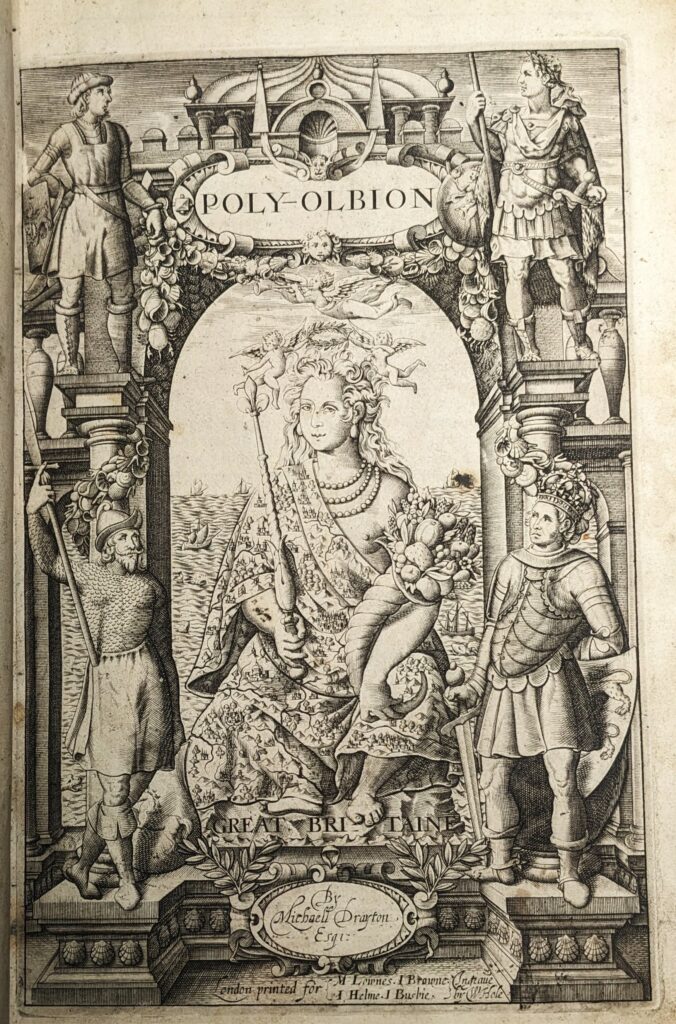
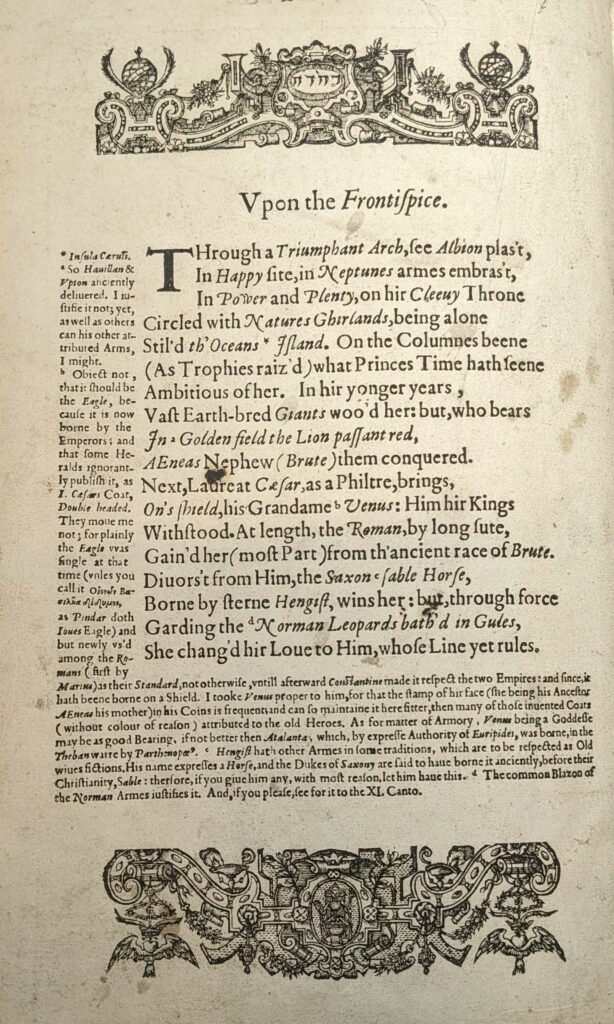
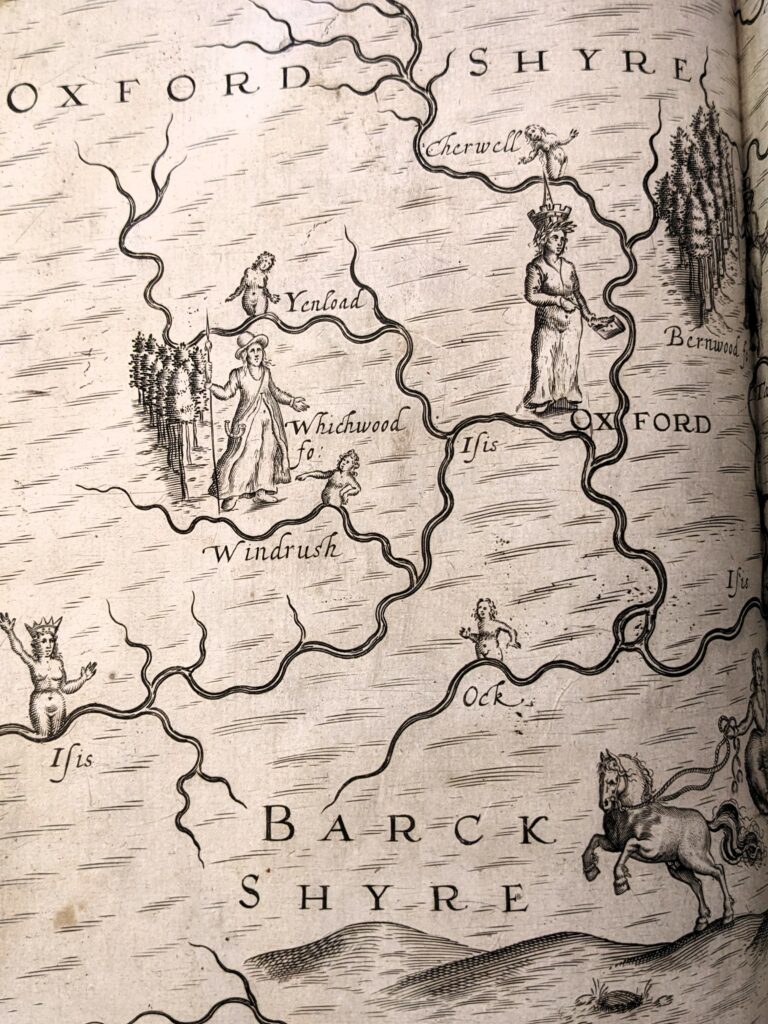
Poet Michael Drayton (1563-1631) collaborated with engraver William Hole and historian John Selden on this 15,000-line poem. The poem tells the story of England and Wales in a series of songs dedicated to counties. The history, legends and geography of the counties are described by transforming natural topological features into characters in a story. Hole contributed engraved maps and Selden provided notes to explain the verses.
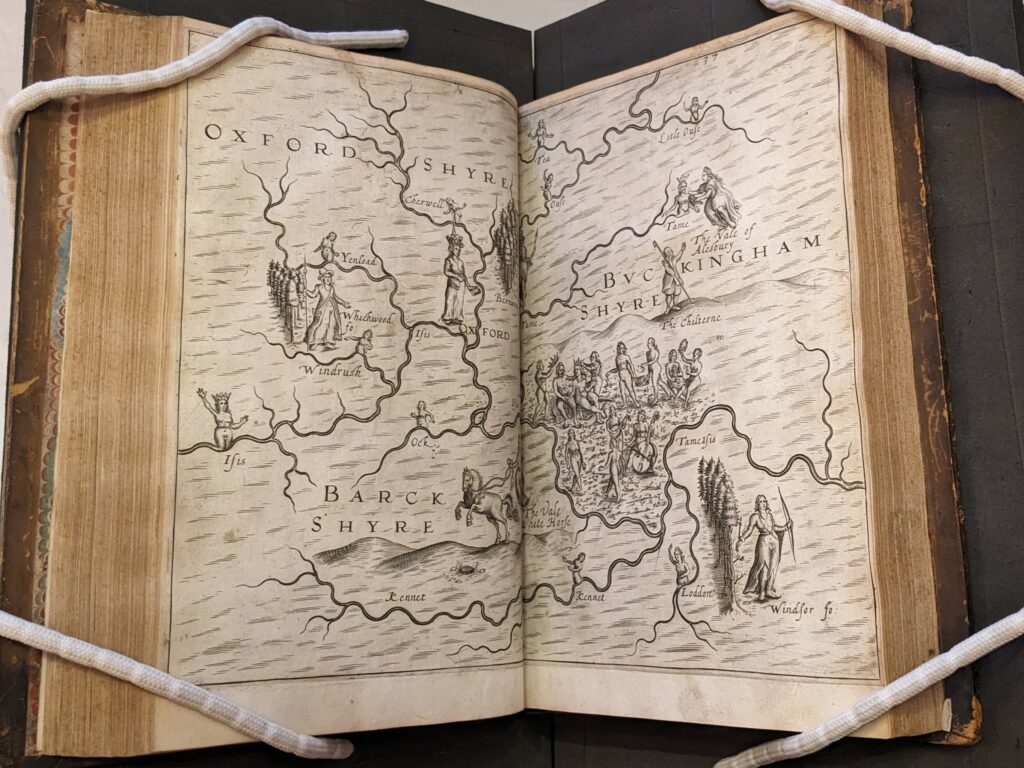
Selden (1584-1654) was a student at Hart Hall (a forerunner to Hertford College) and was in his twenties when he wrote the Poly-Olbion’s annotations. He went on to have a career as a lawyer, MP, linguist and historian. Selden was a major collector of books and bequeathed 8,000 books to the Bodleian Library.
View the record for the Poly-Olbion in the online SOLO library catalogue
What has happened to Hertford’s rare books?
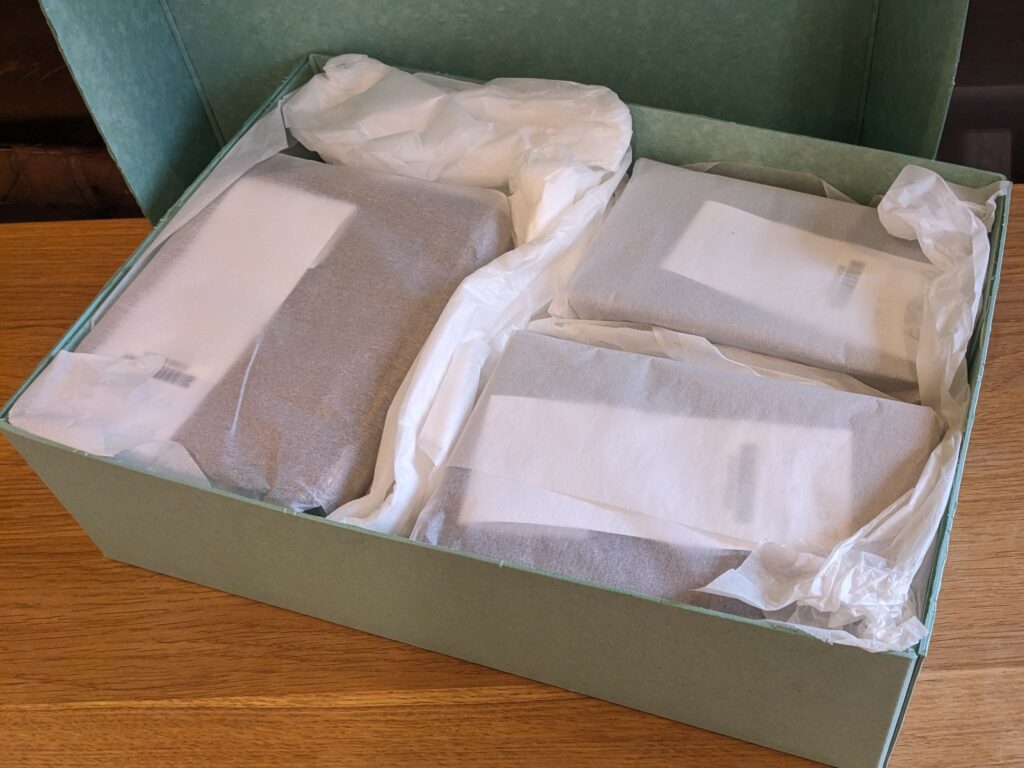
Hertford’s rare book collections (and most archives) are temporarily being stored offsite in specialist conservation storage as part of the library building project. Every book sent offsite over the past 12 months has gone through a special process to prepare it for storage. This work has been done by the library staff, with additional support from a brilliant team of trained student employees and volunteers.
Items have been:
- Graded for condition and categorised by size.
- Gently cleaned using a brush to remove surface dust and dirt.
- Details recorded in a temporary database.
- Title pages and other unusual features photographed.
- Tied using cotton tape (ribbon made out of cotton, not sticky tape!) if parts were damaged.
- Wrapped in archival tissue paper.
- Placed in a suitable acid-free archival box. Larger books had custom-made boxes that fit them individually.
- Securely transported to the specialist storage.
Whilst in offsite storage the use of these resources will be minimised to reduce the risk of damage during transport. Cataloguing and a small number of research consultations and displays will continue.
Links
Information about our upcoming Library renovation project
Rare Books and Archives at Hertford
Hertford Archives’ guide to the history and records of Hart Hall, Magdalen Hall and Hertford College

